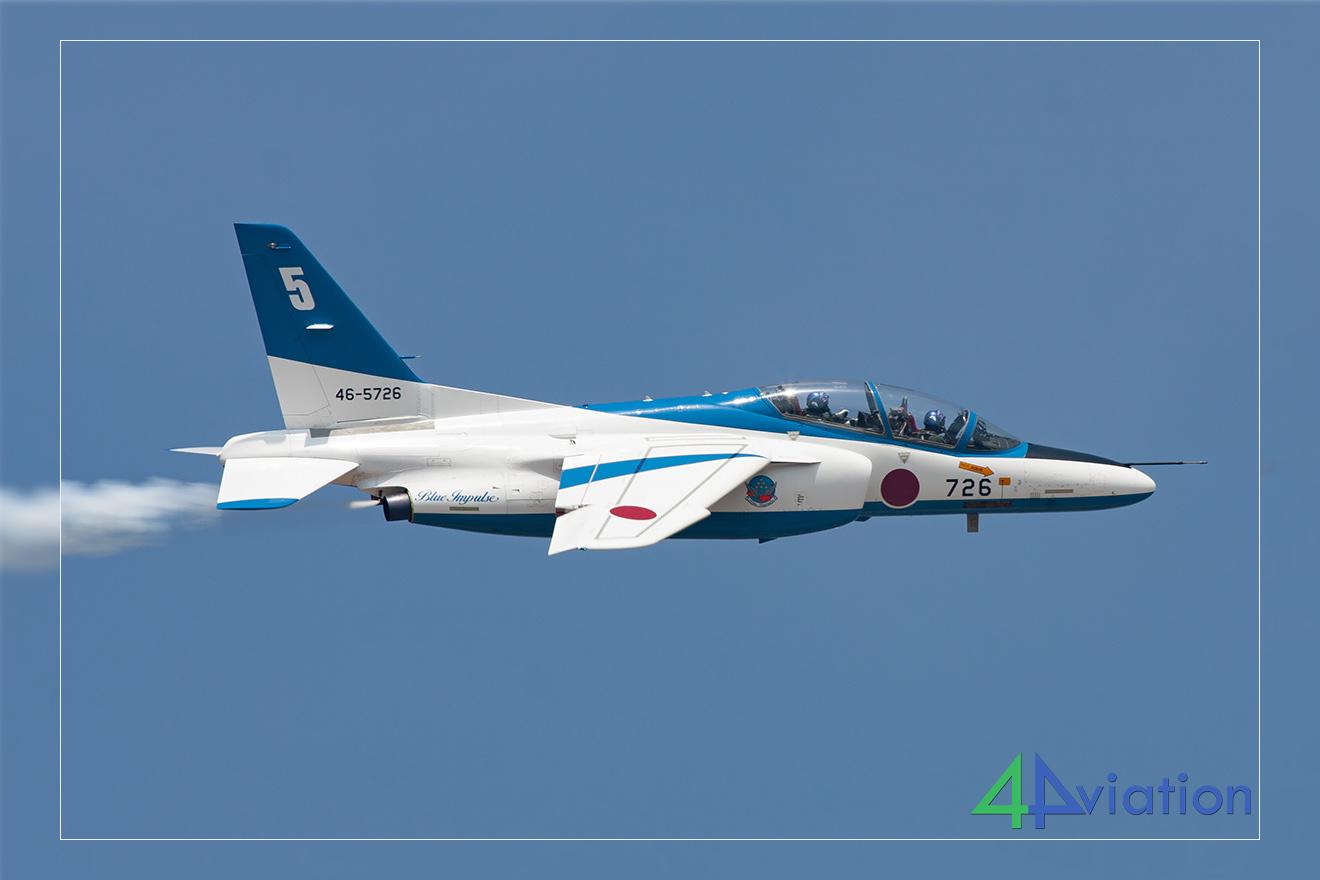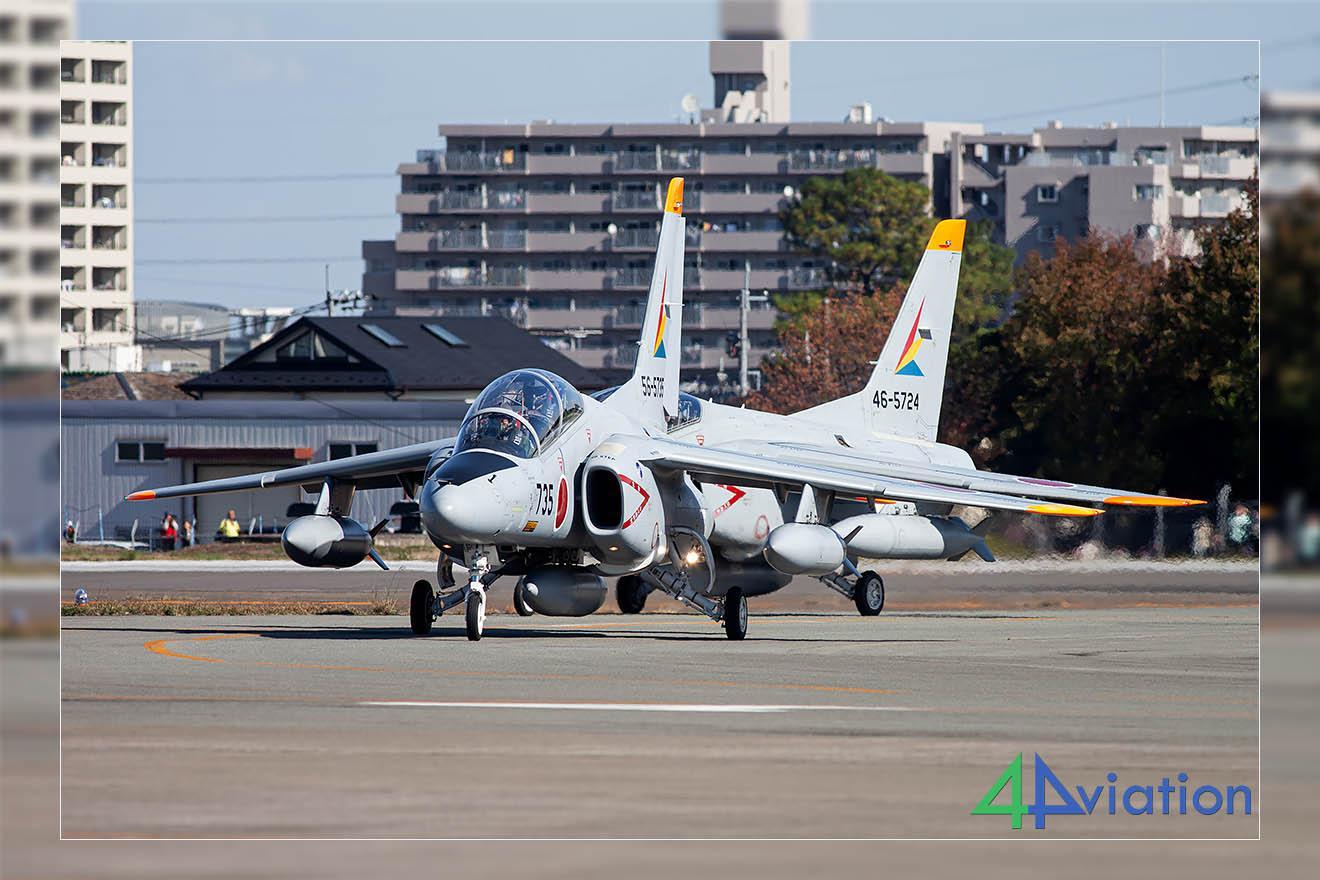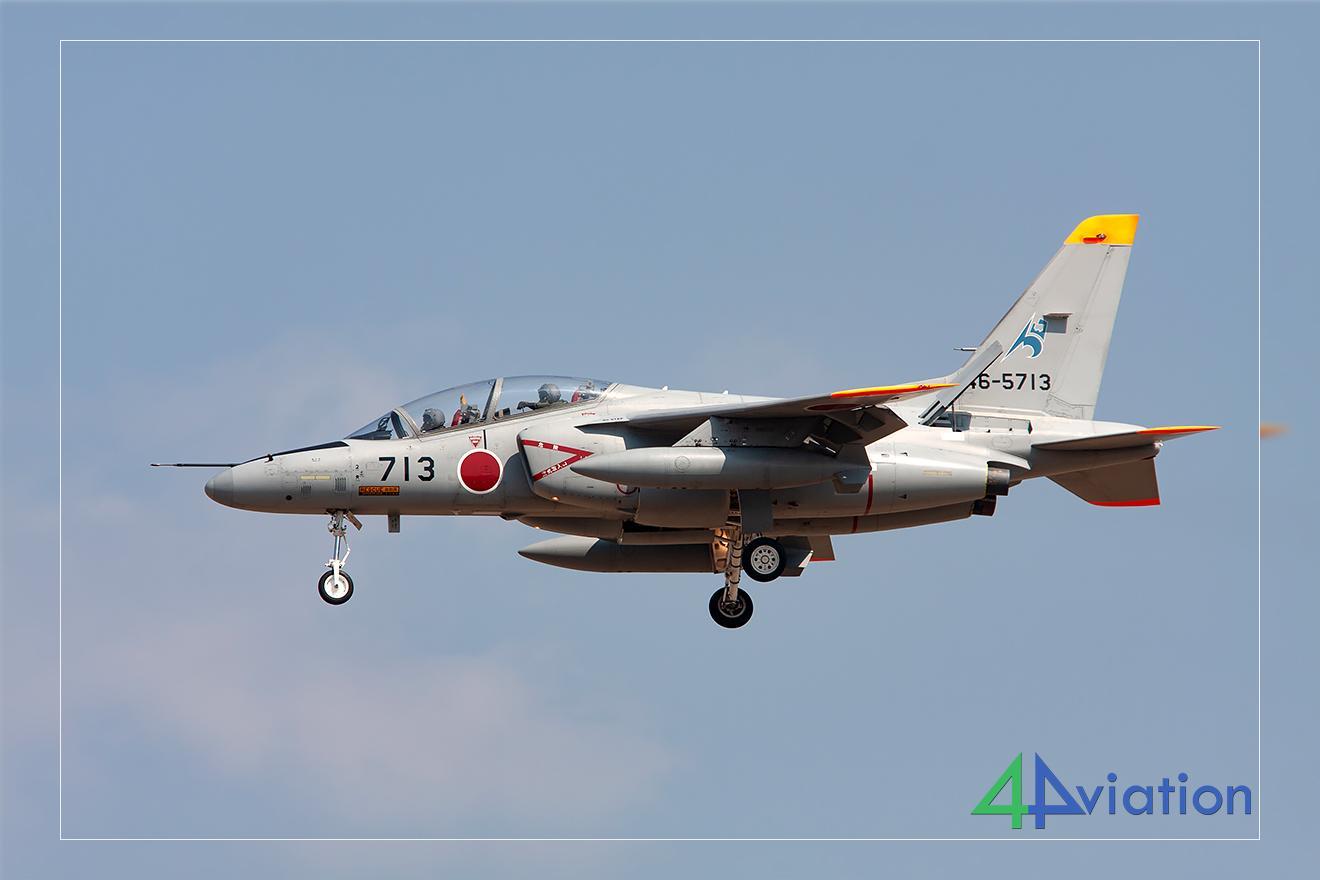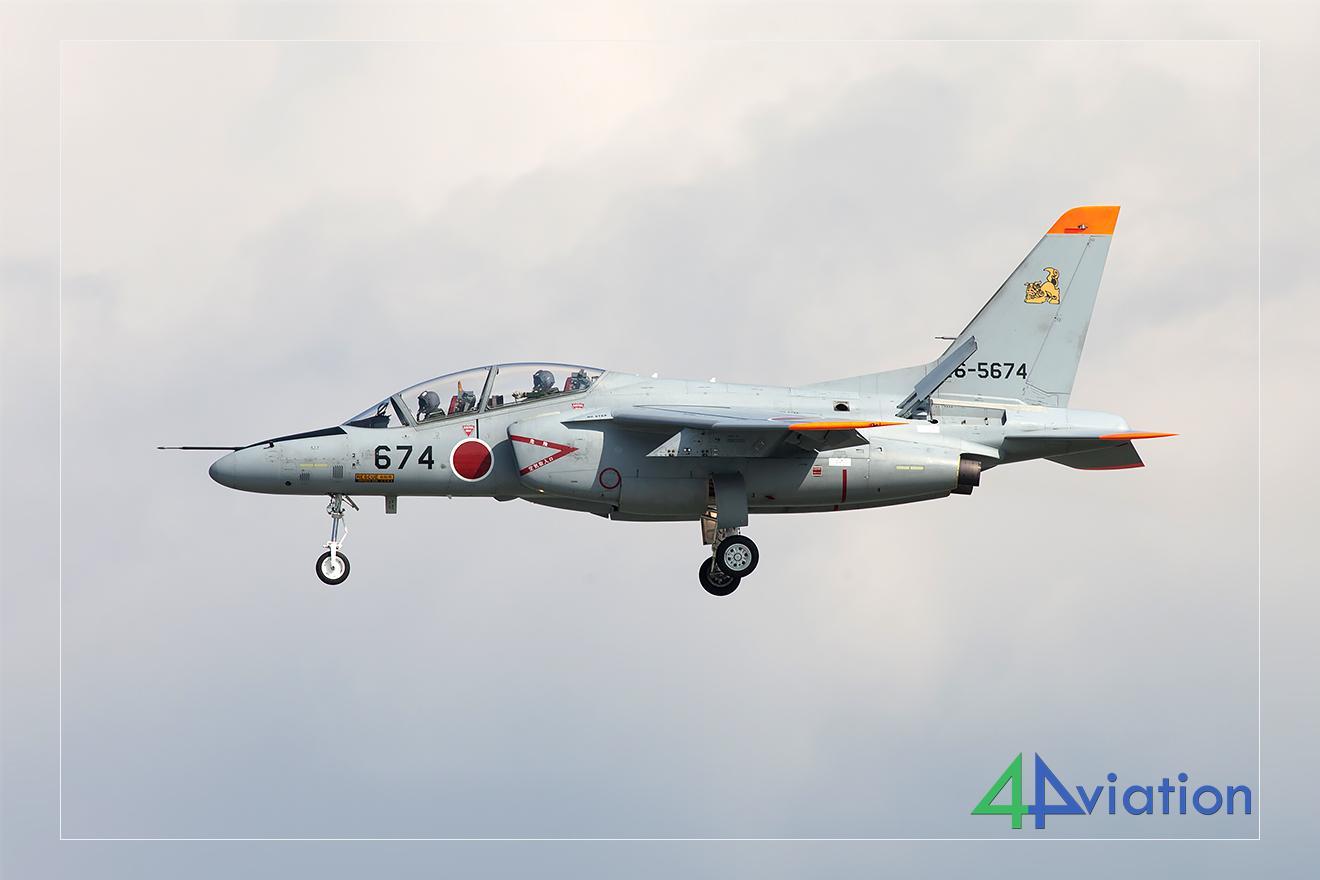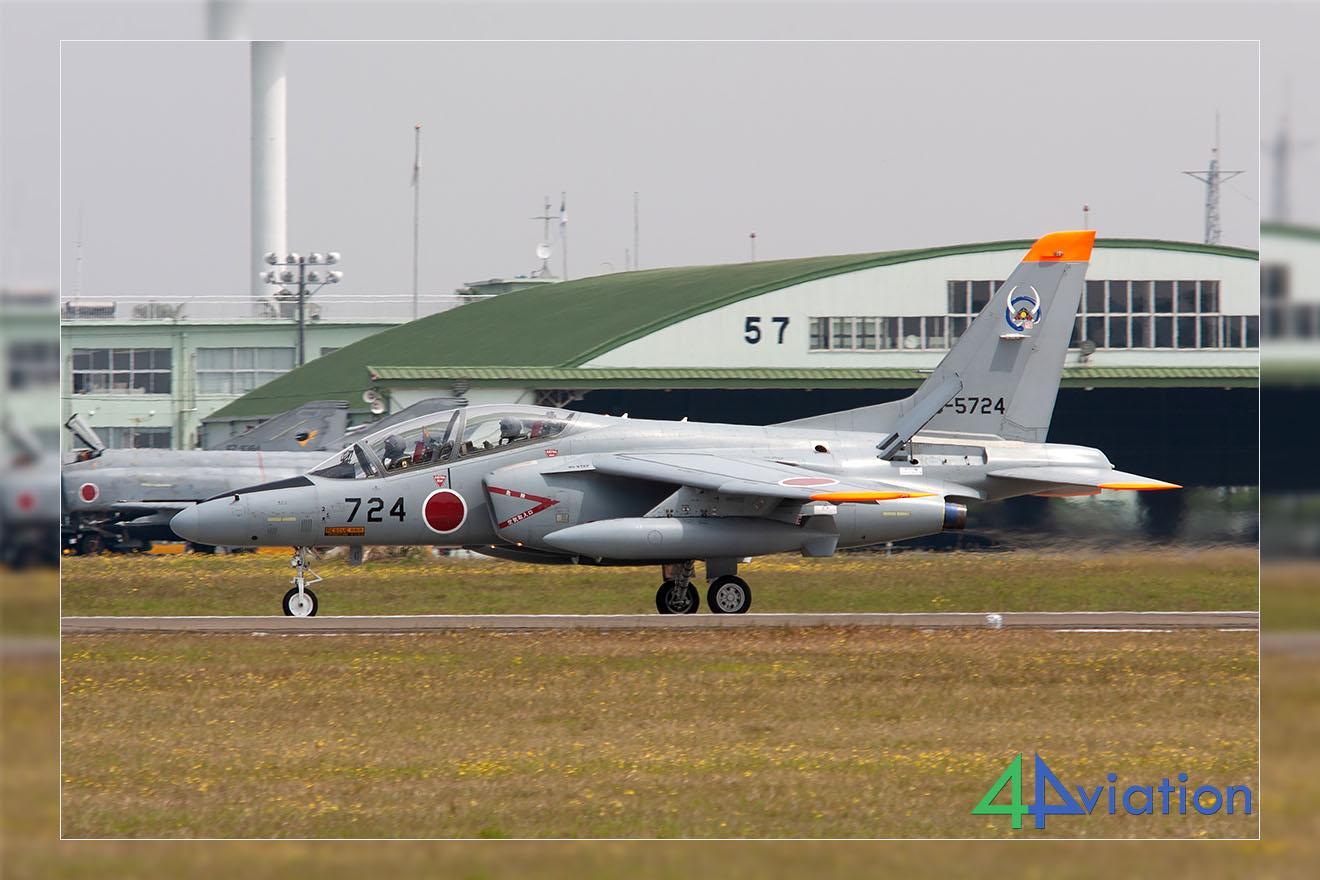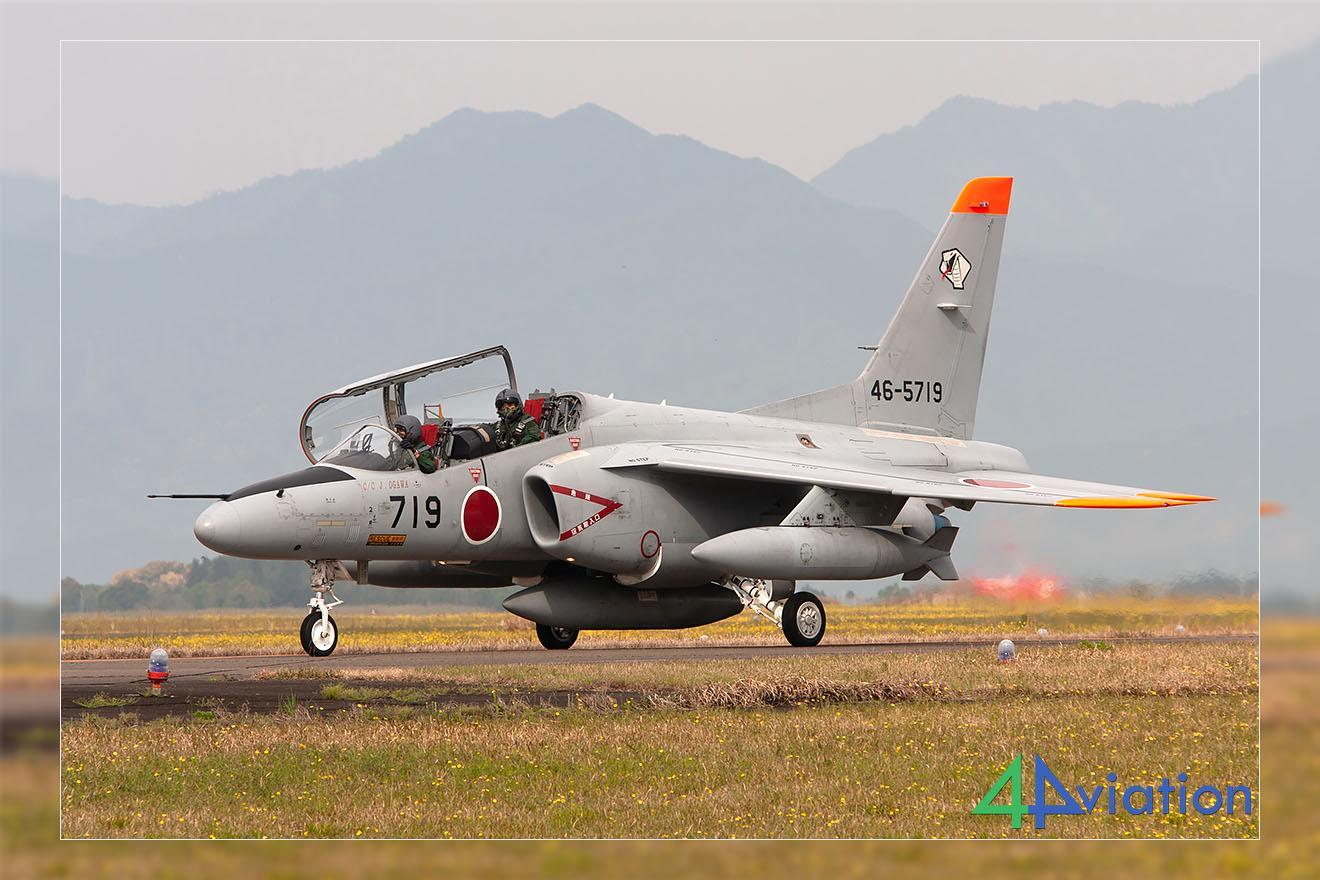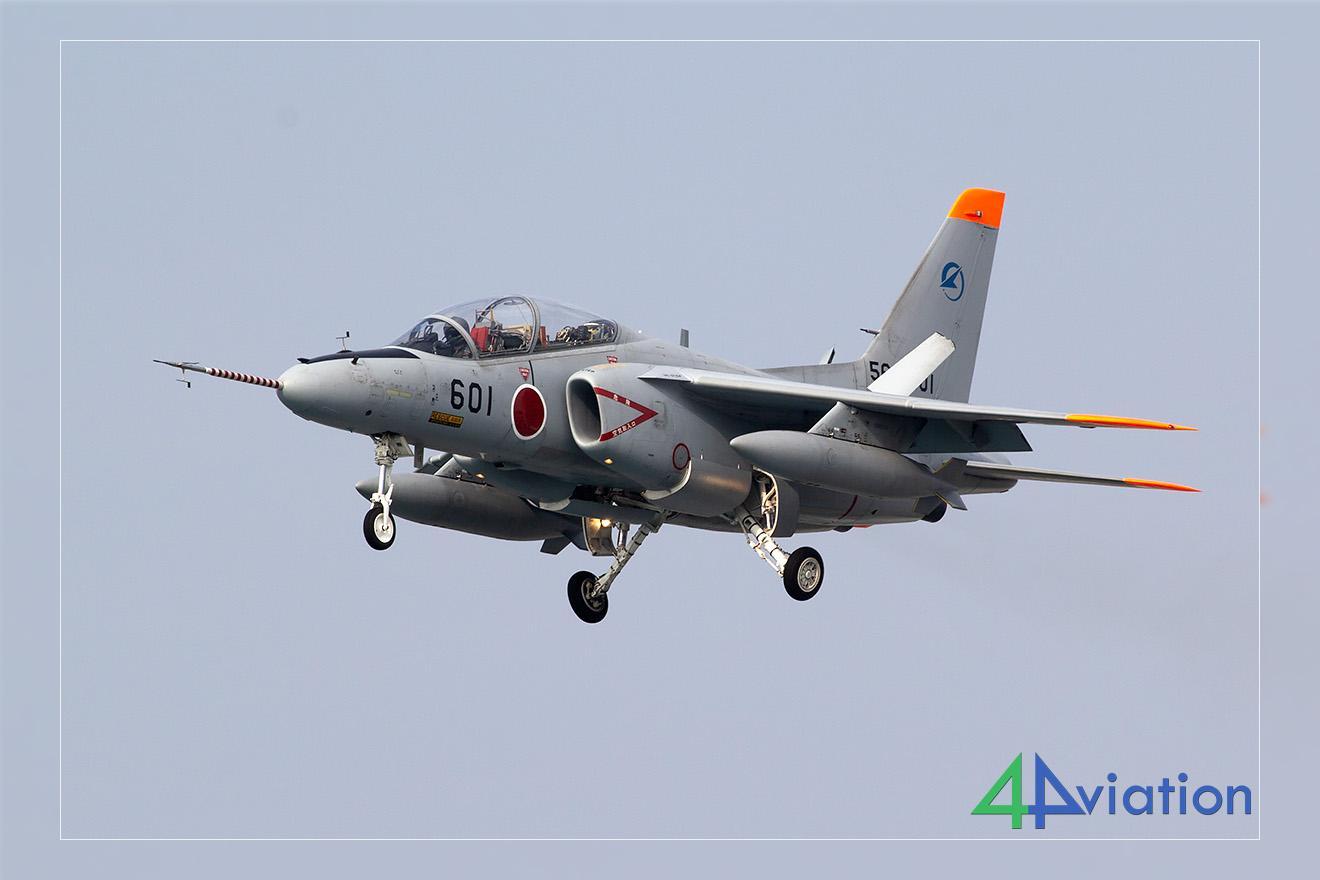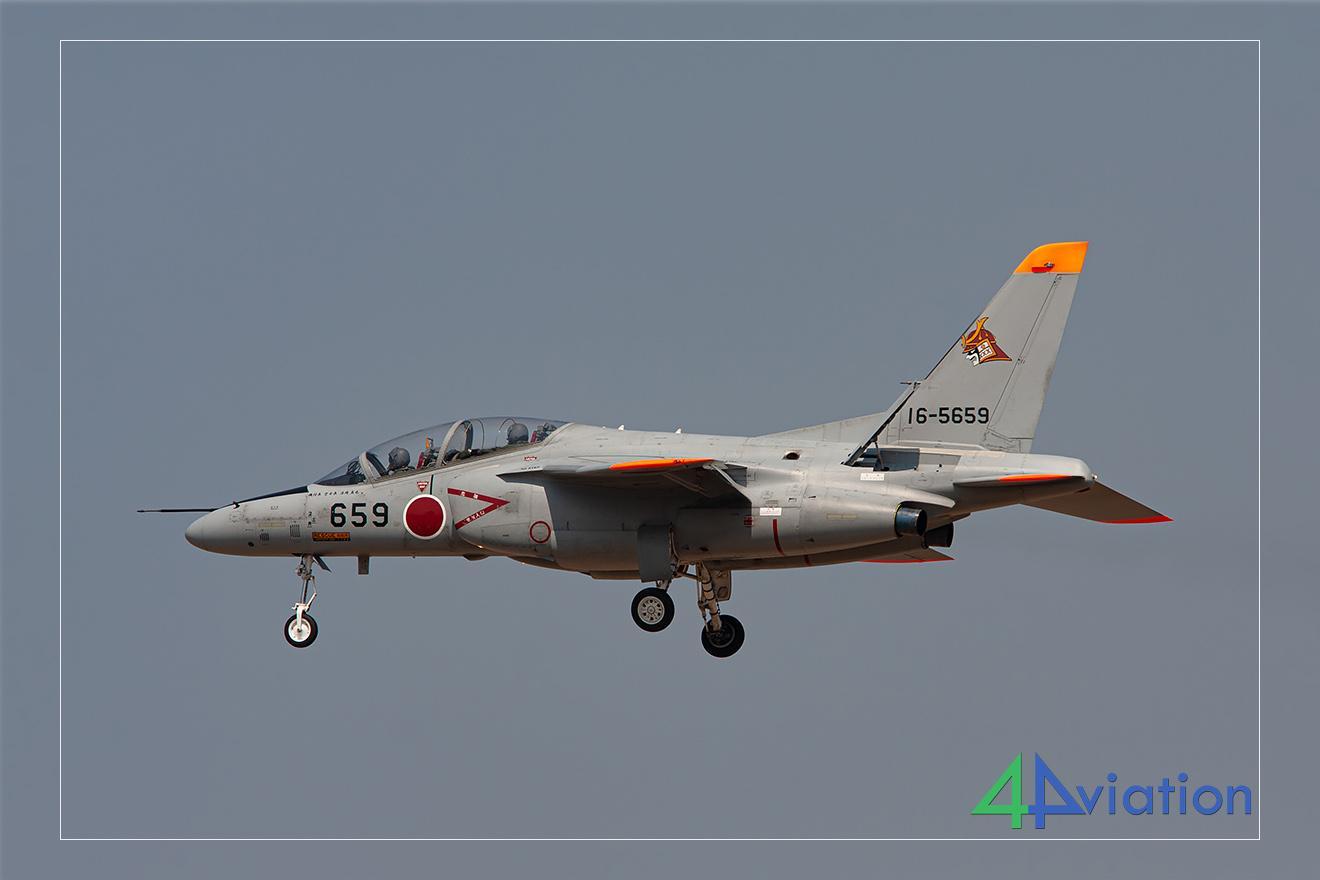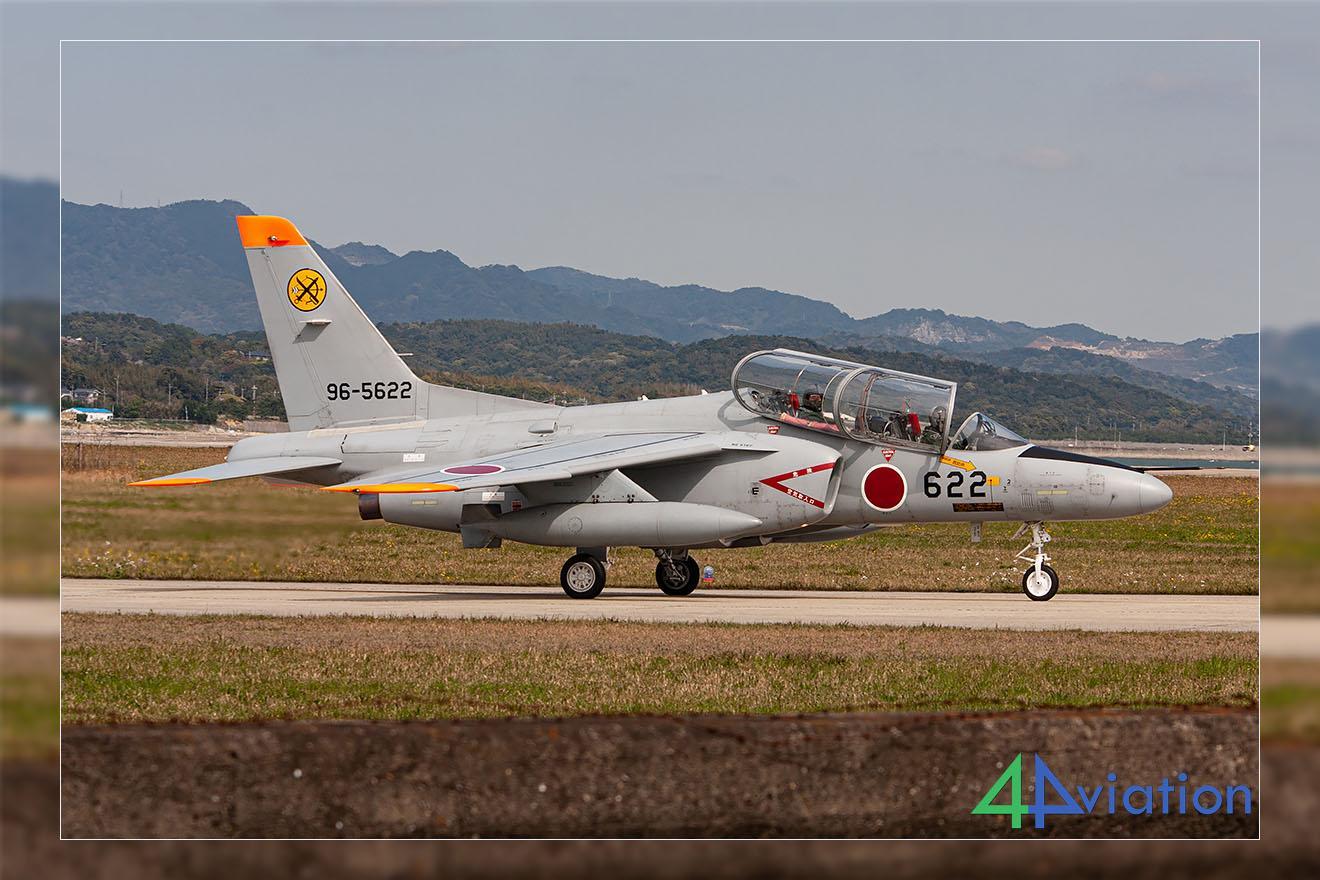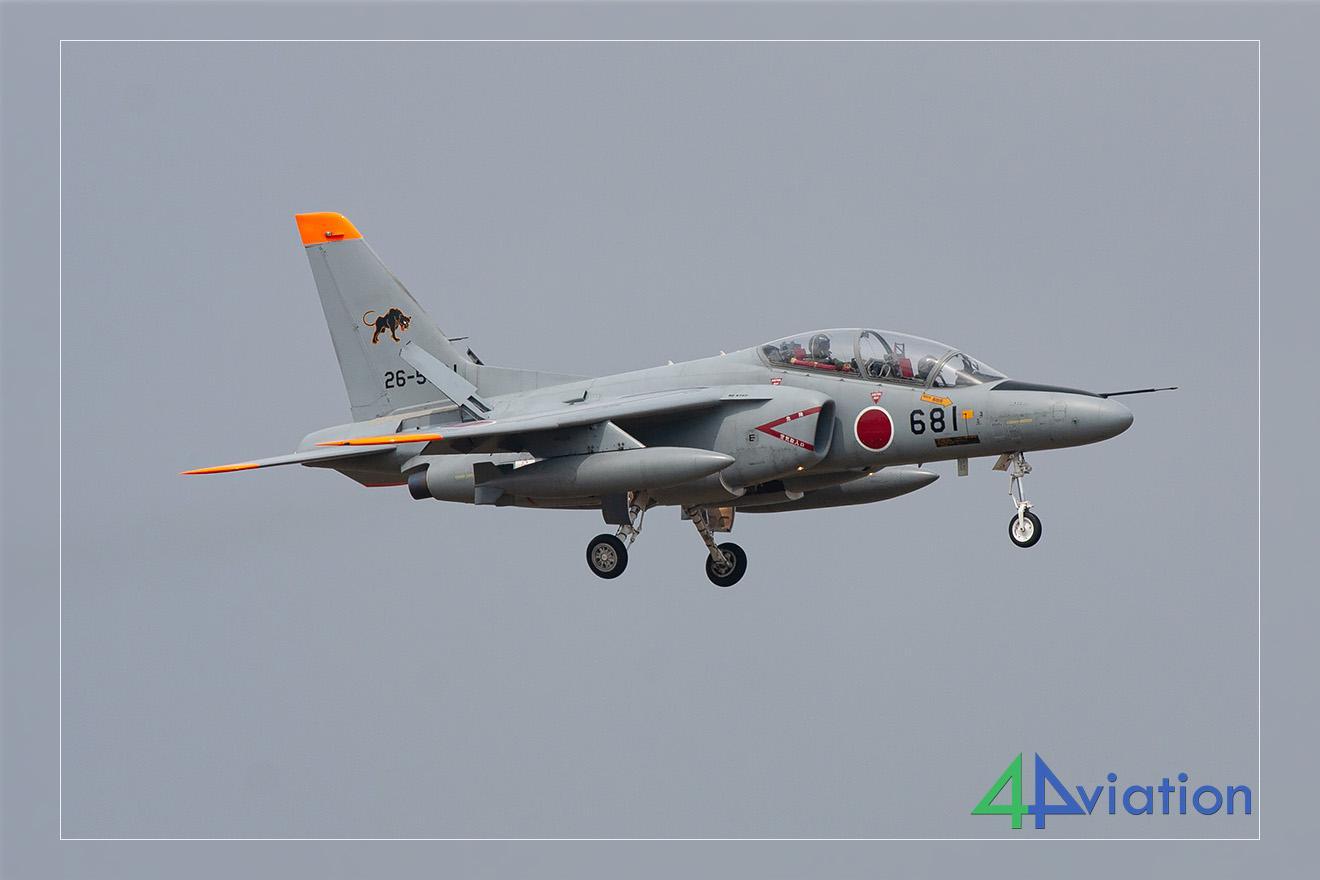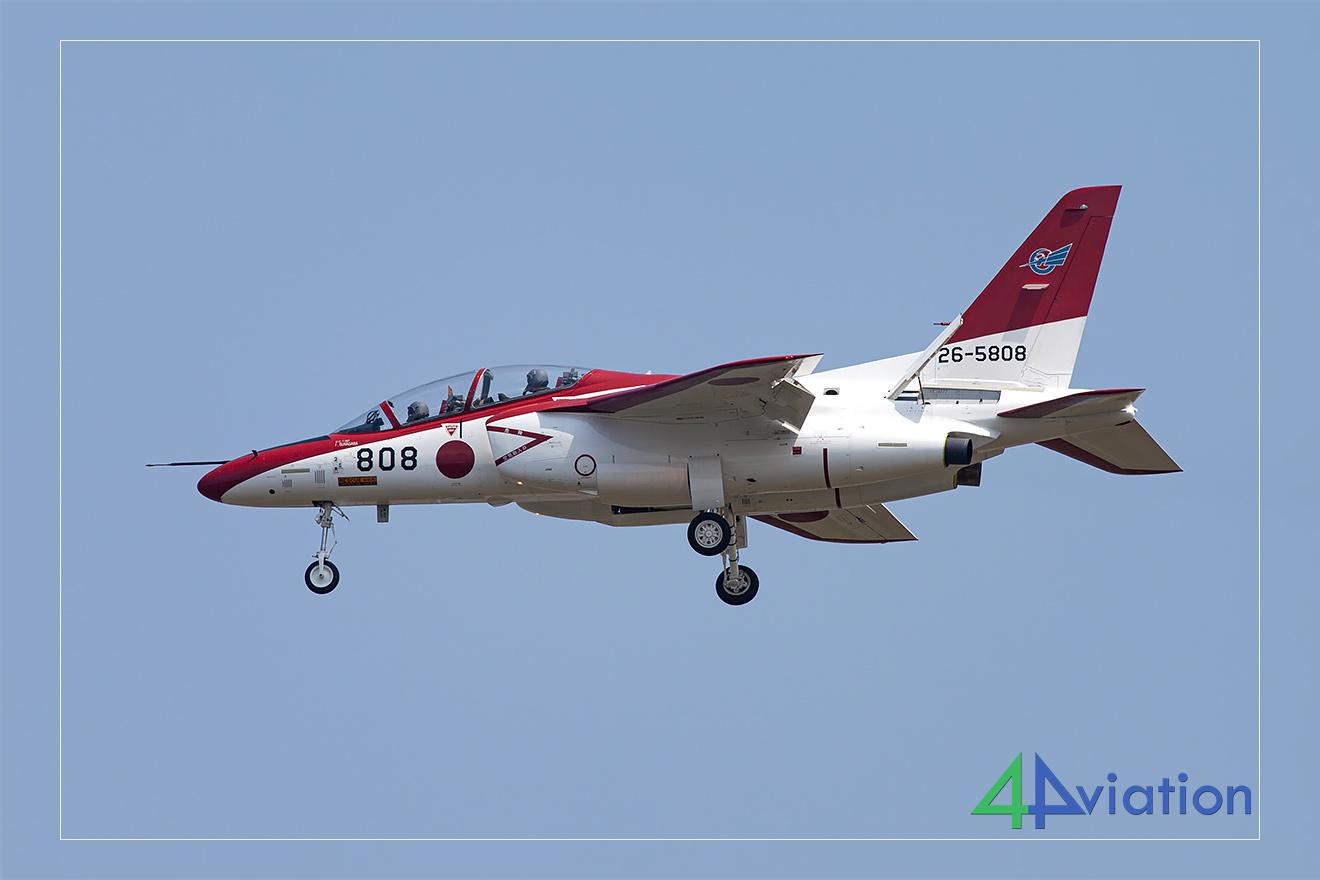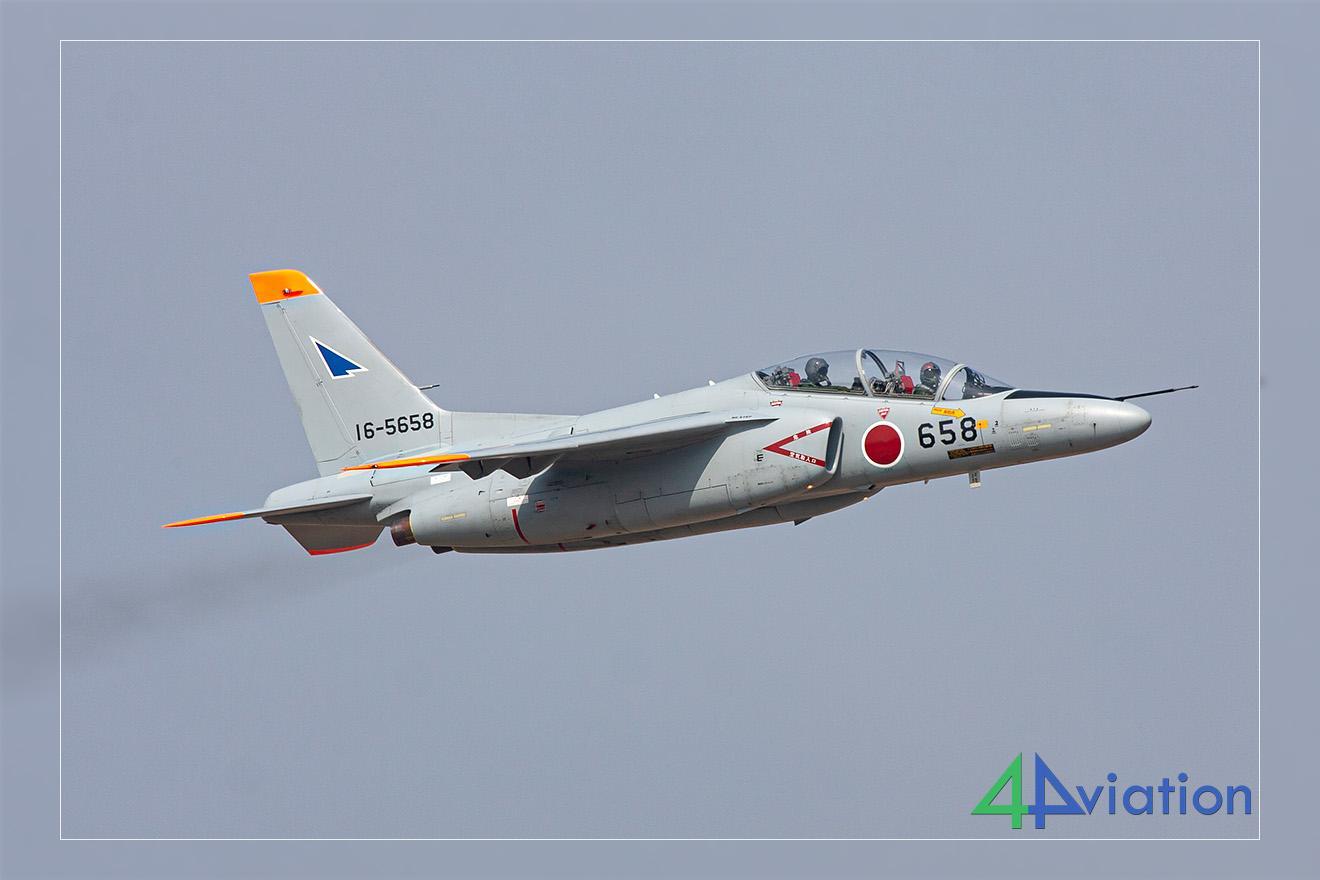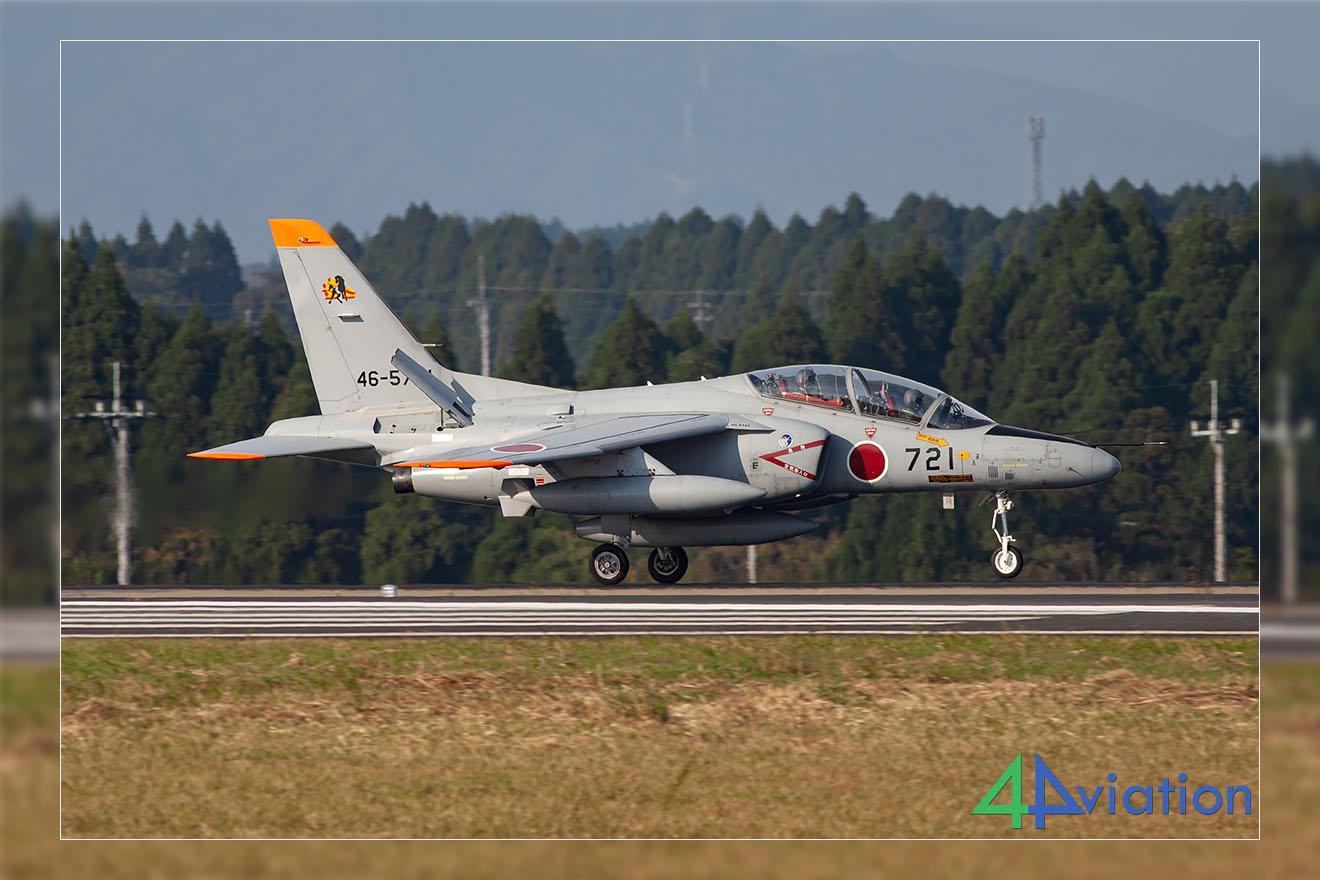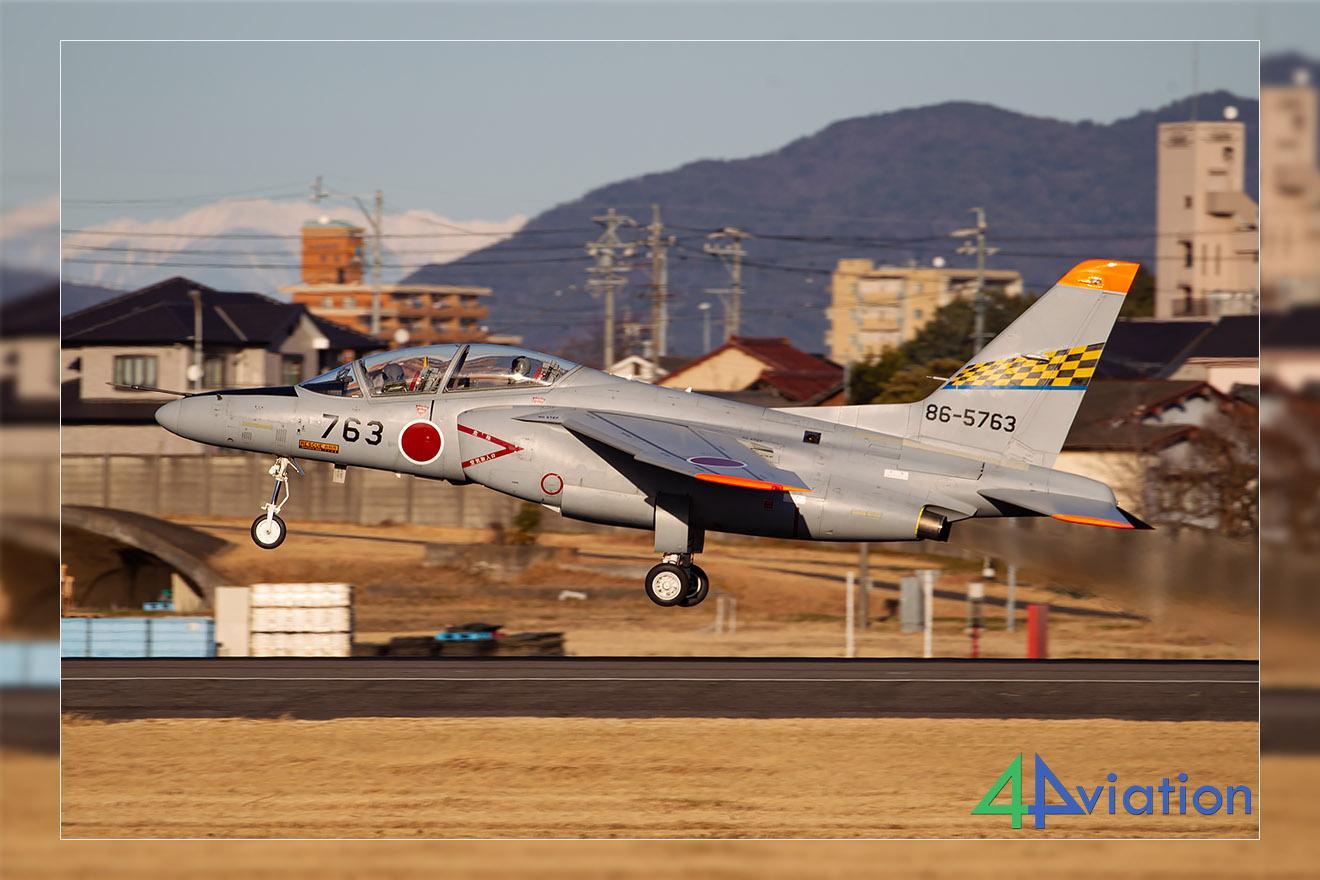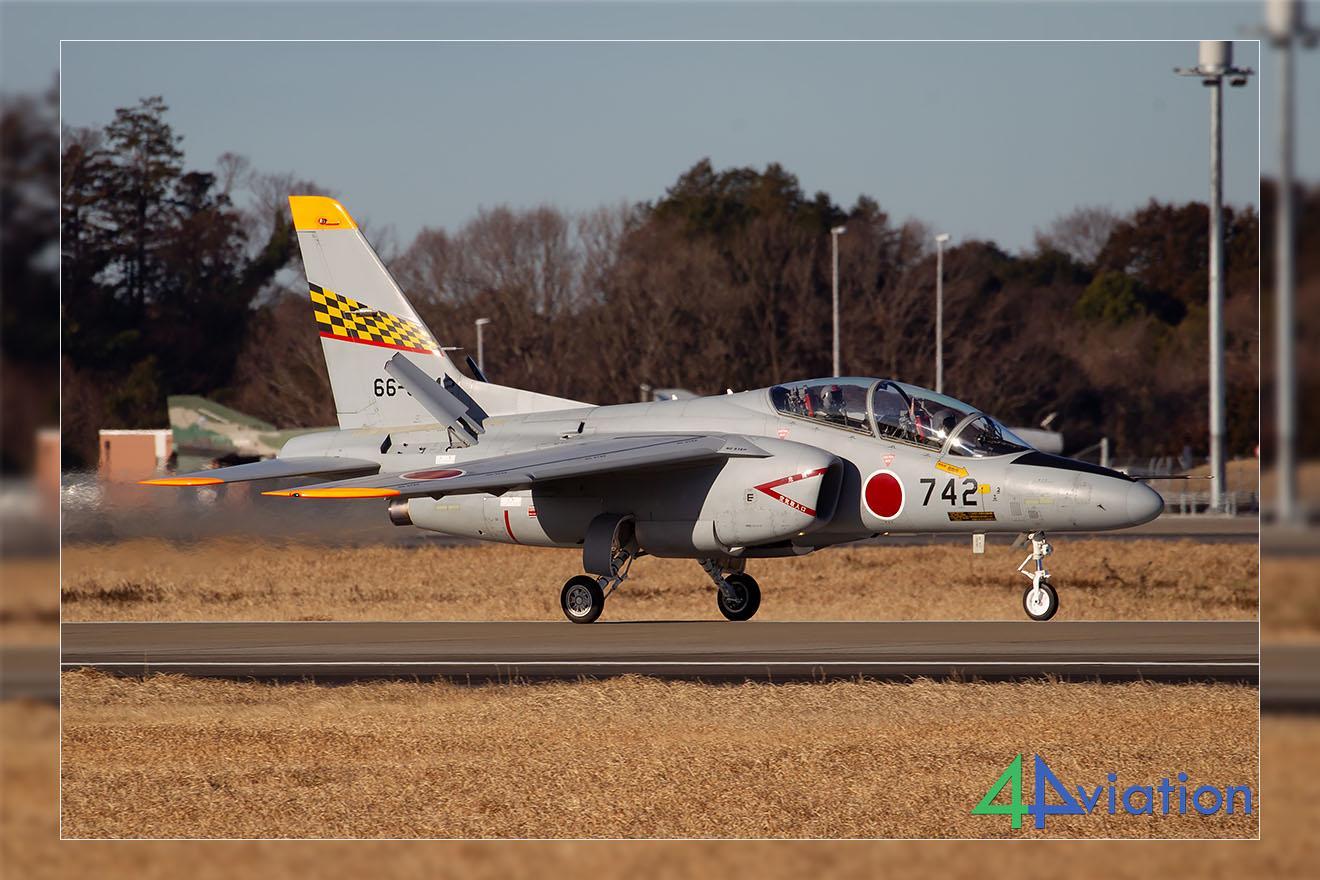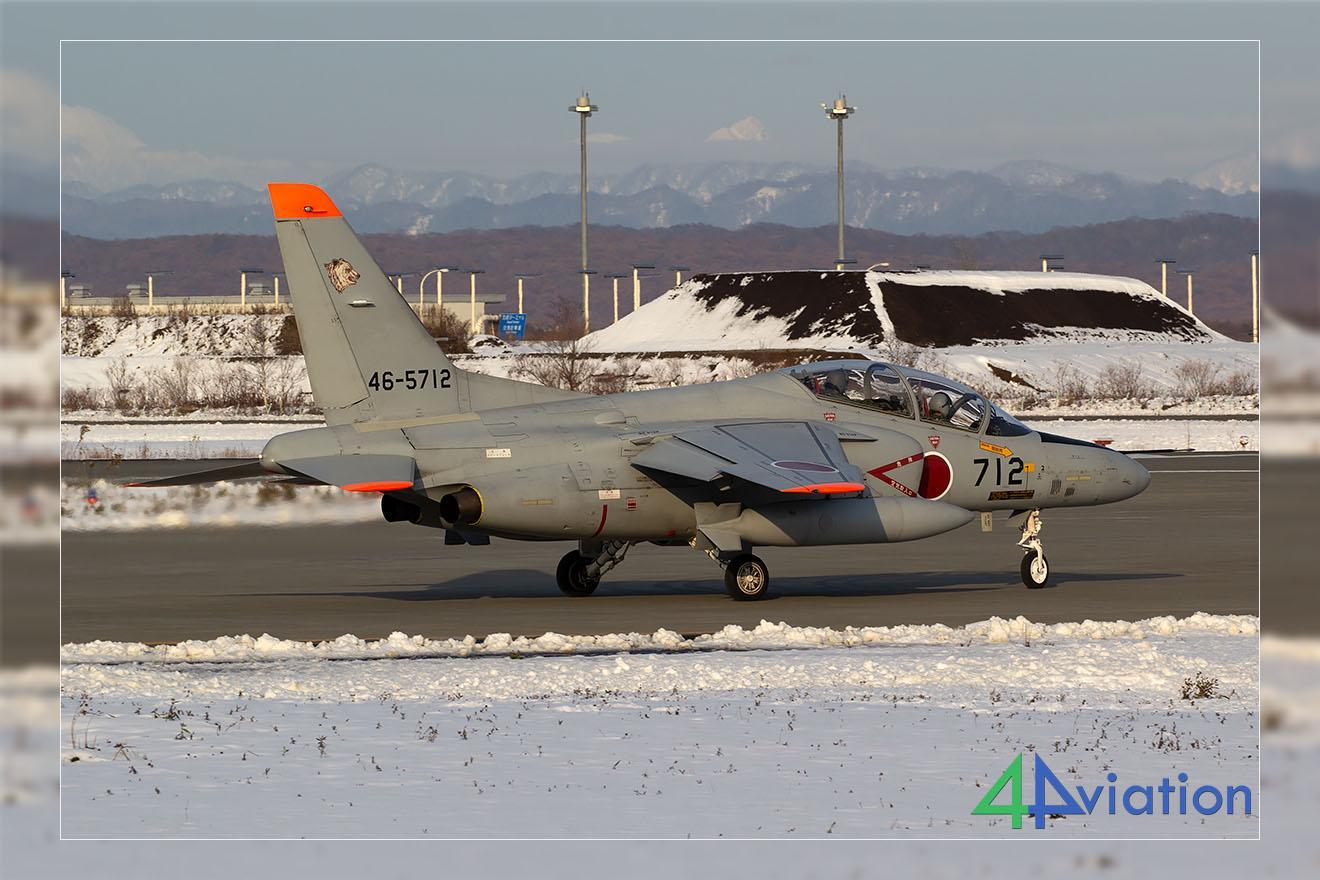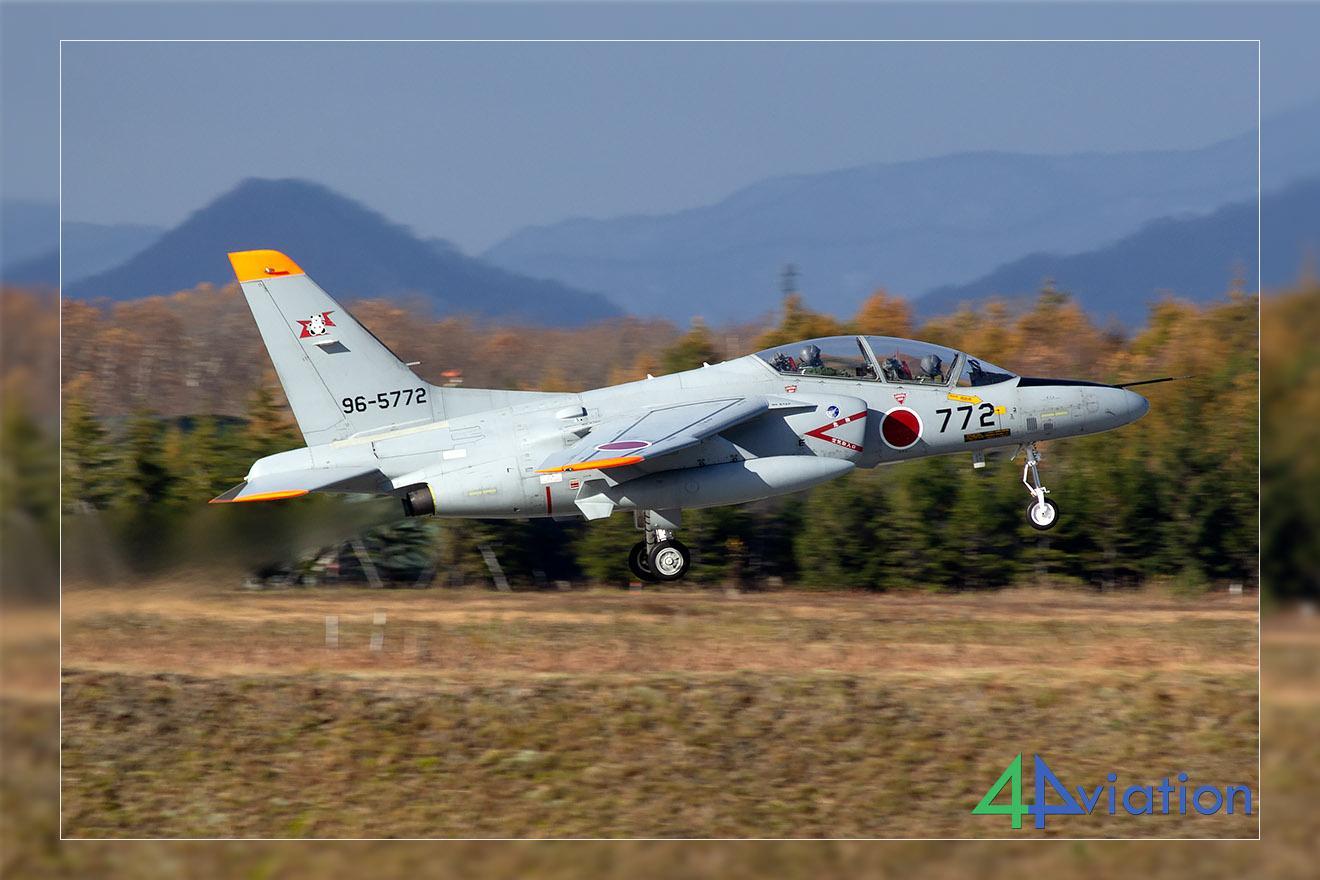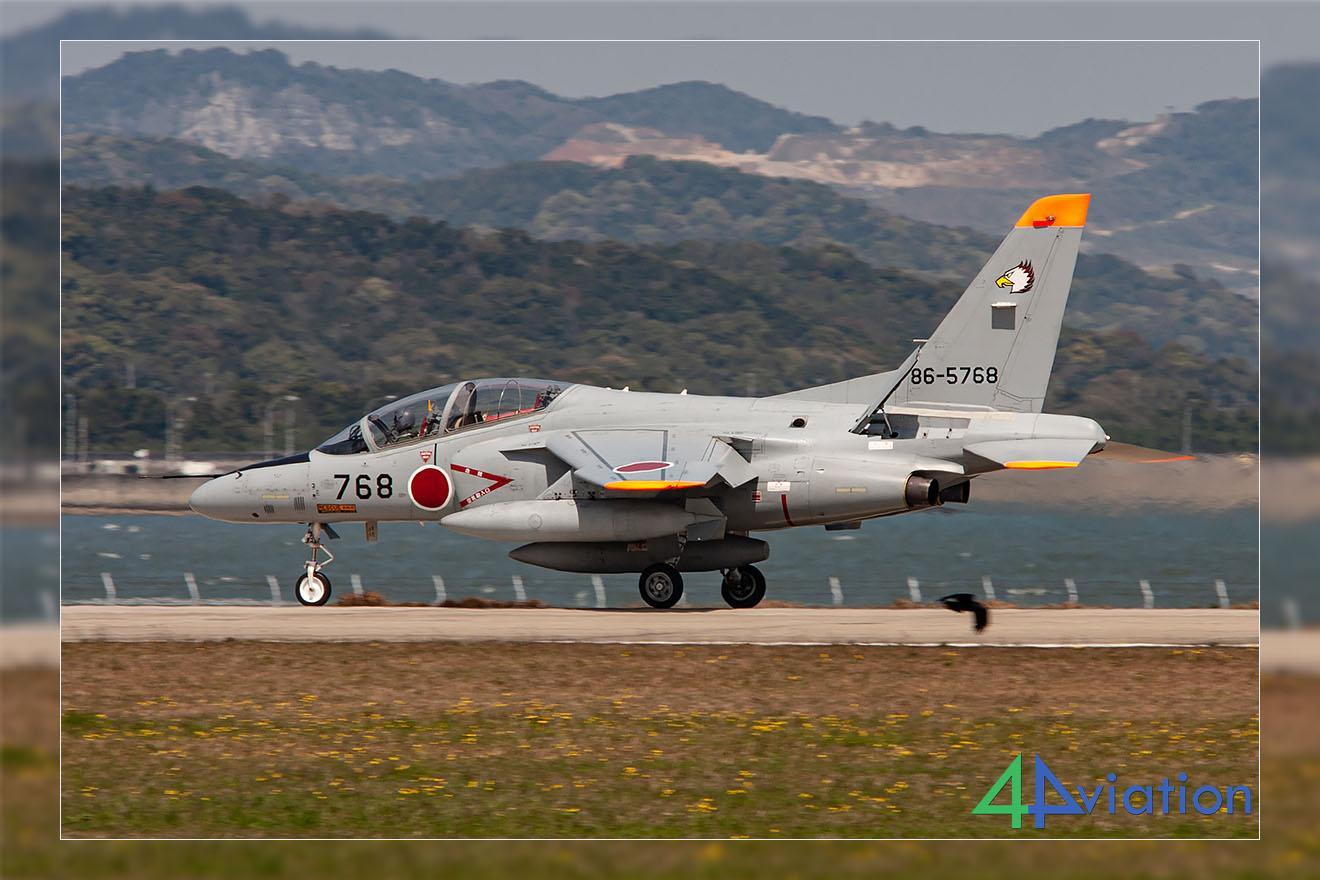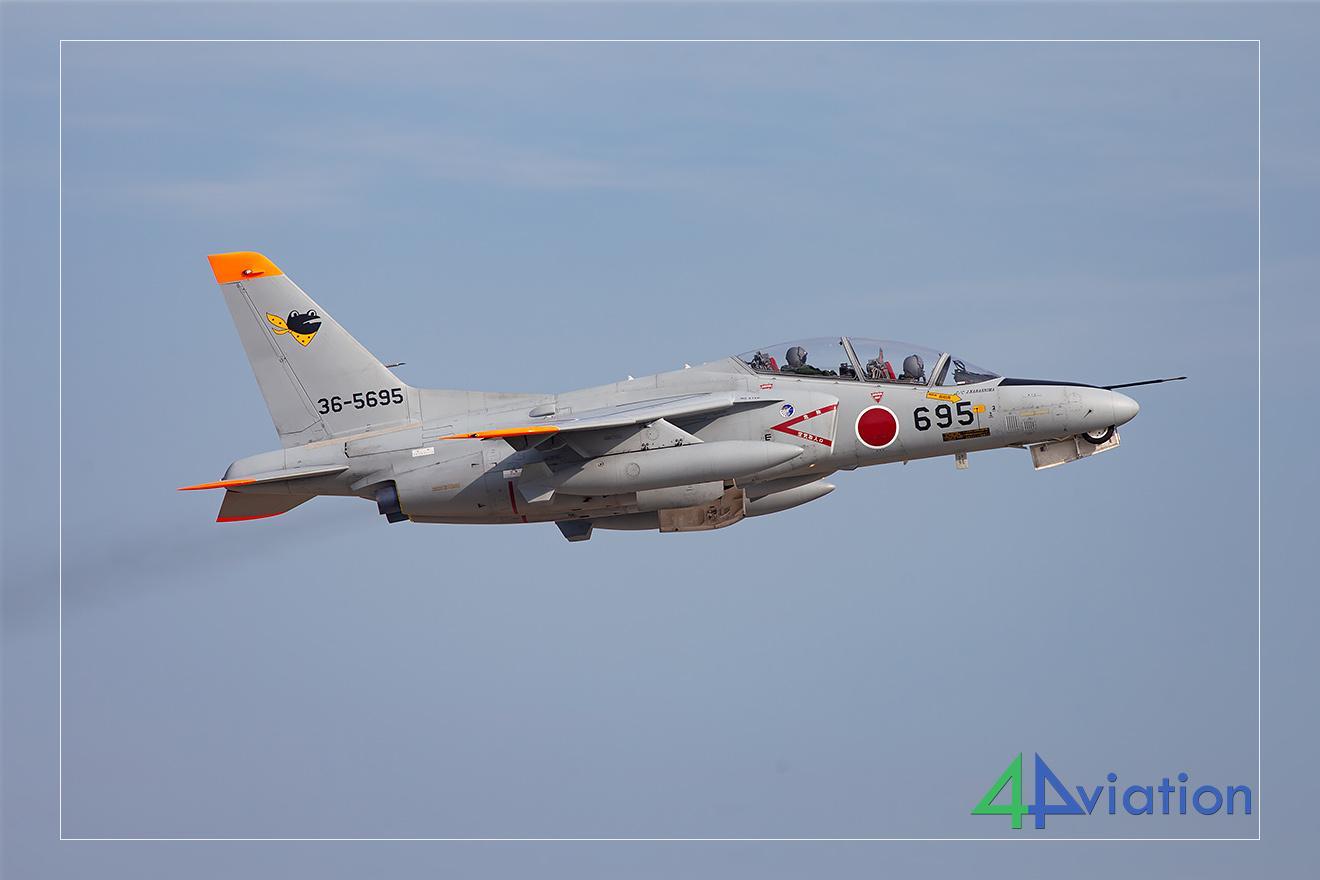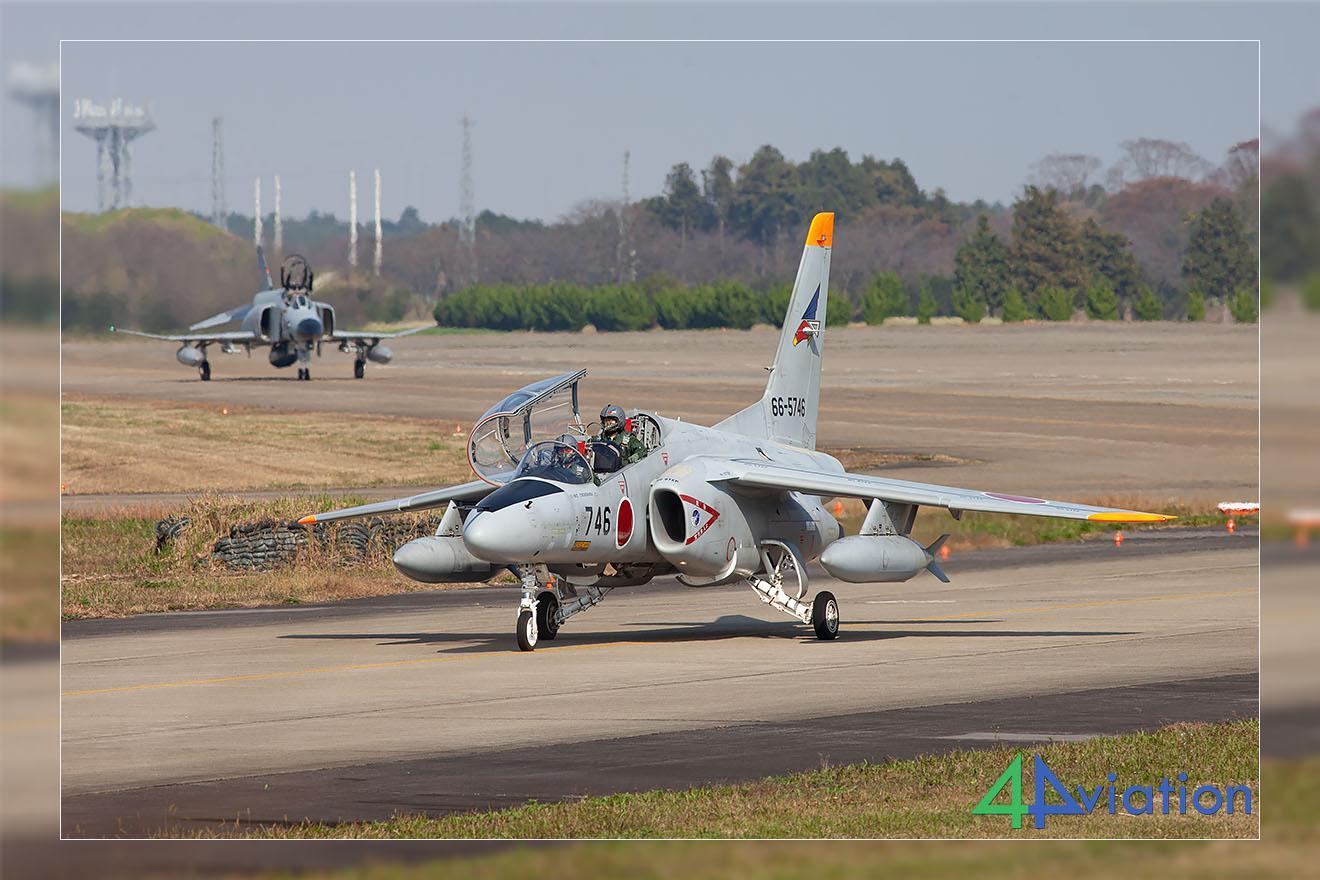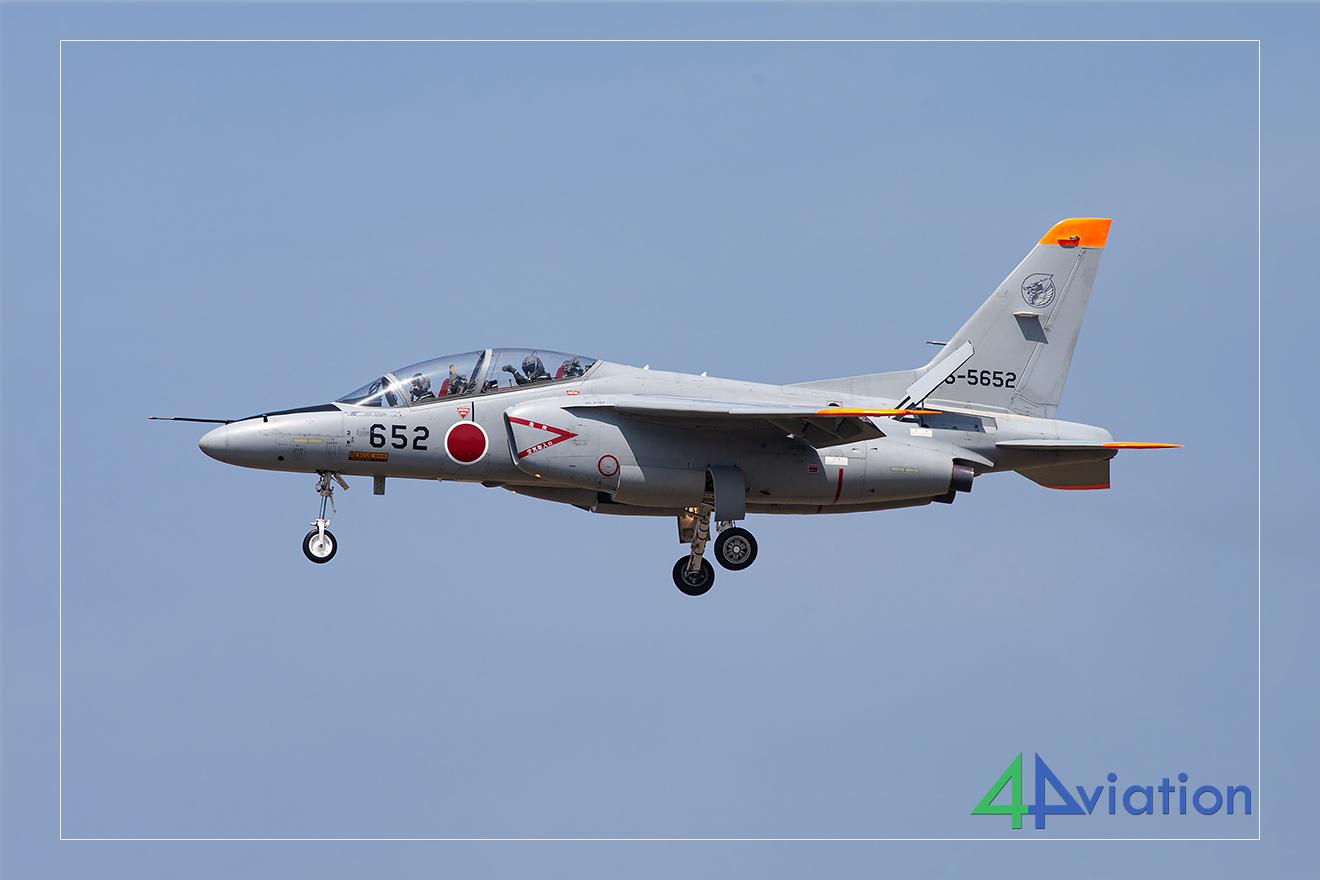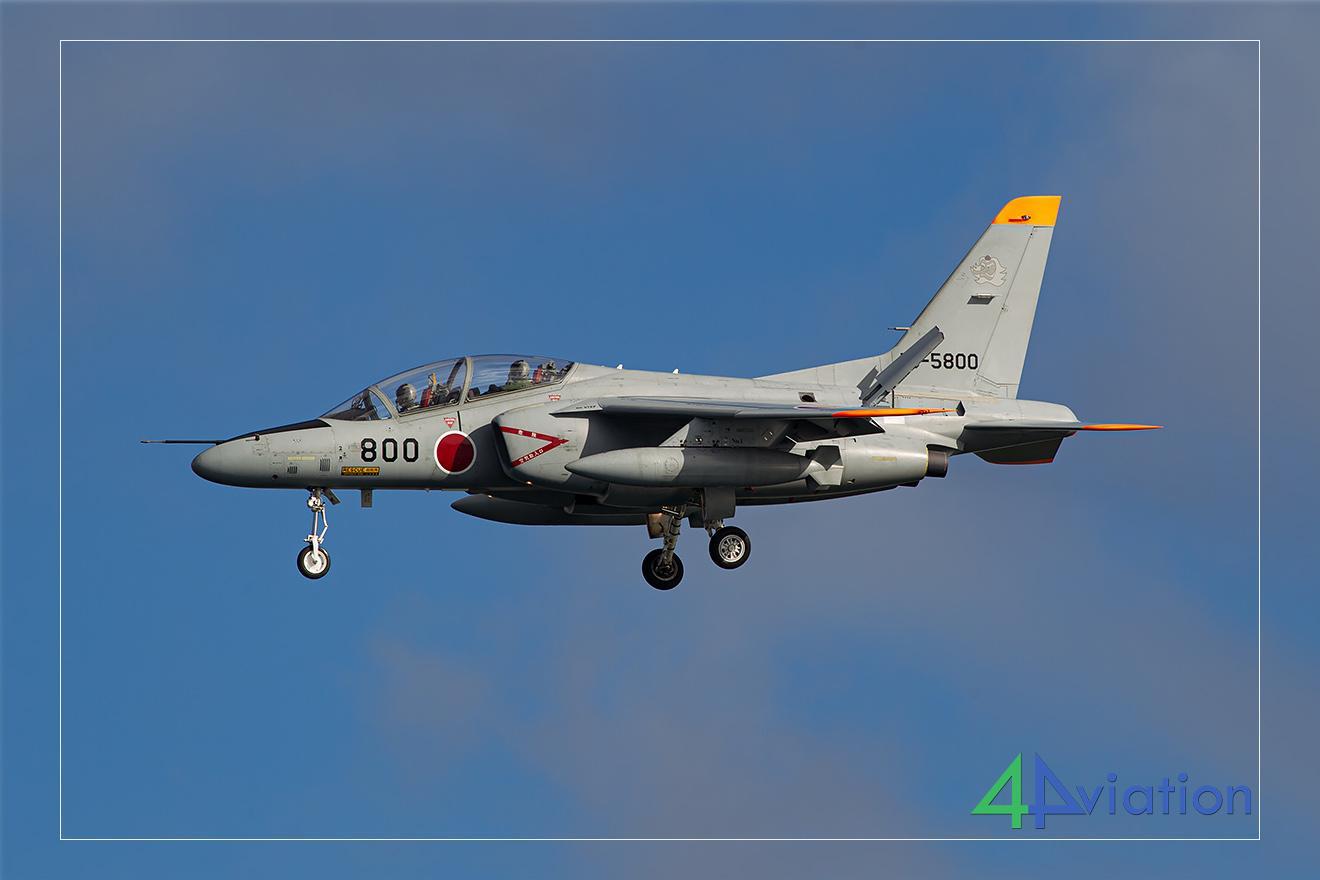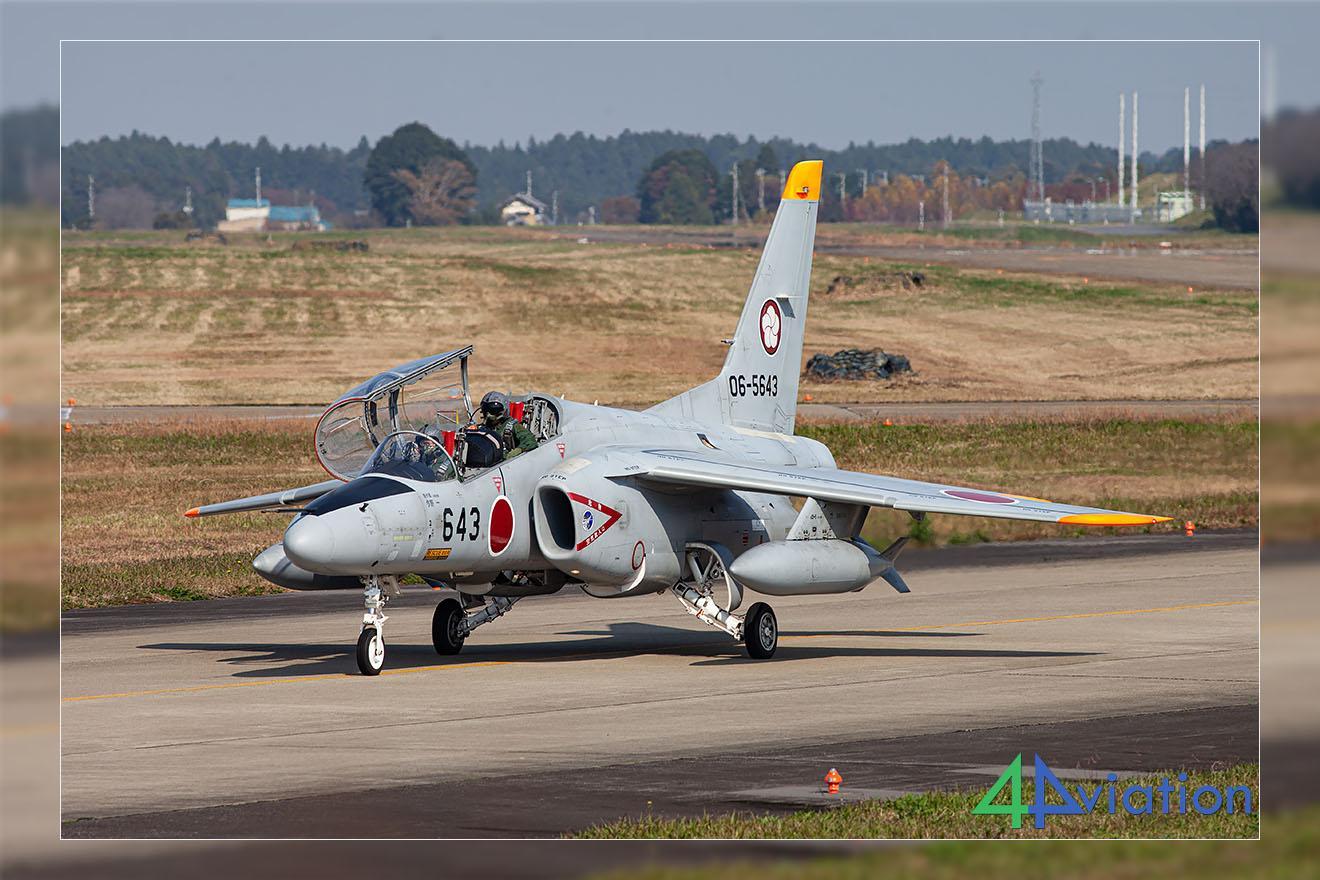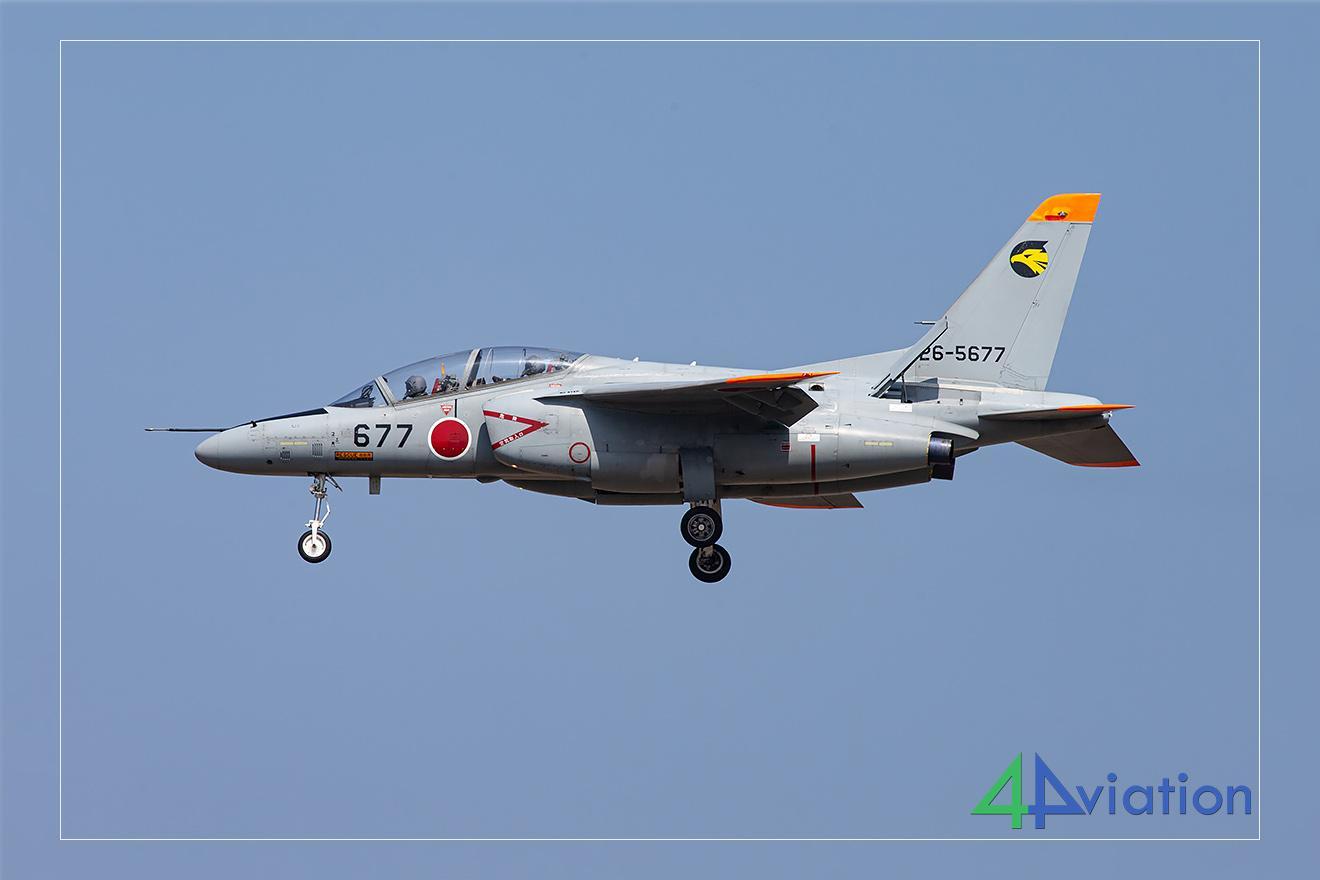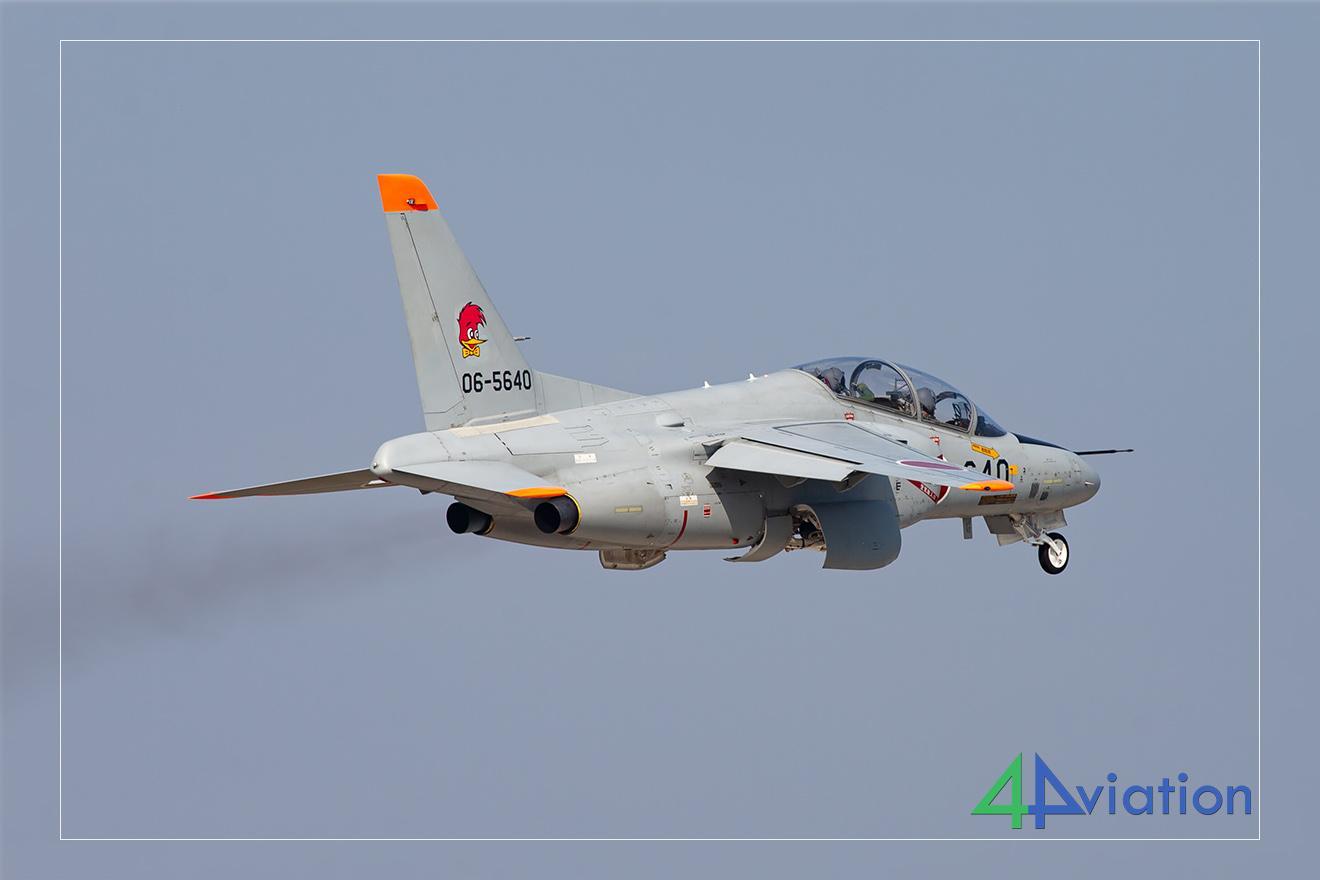Blue Impulse / 11 Hikotai
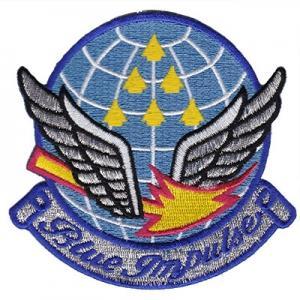 Blue Impulse Demonstration team has been the much-loved showcase of the JASDF since 1960, when the team started with 5 F-86s. Also known as 11 Hikotai, Blue Impulse nowadays flies demonstrations with 6 T-4s as can be seen in the badge as well. The unit has around 12-13 aircraft at its disposal and operates from Matshushima Air Base.
Blue Impulse Demonstration team has been the much-loved showcase of the JASDF since 1960, when the team started with 5 F-86s. Also known as 11 Hikotai, Blue Impulse nowadays flies demonstrations with 6 T-4s as can be seen in the badge as well. The unit has around 12-13 aircraft at its disposal and operates from Matshushima Air Base.
Shireibu Hikotai
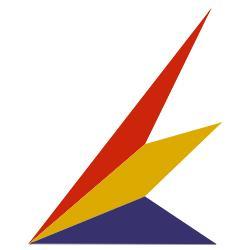
The Central Air Defence Force at Iruma is the parent unit of the Headquarter Squadron (Shireibu Hikotai / 中部航空方面隊 司令部支援飛行隊) flying T-4s and U-4s. Under the authority of the Central Air Defense Force, the squadron operates around fifteen T-4s and two U-4 aircraft. The red, yellow and blue markings represent the three main Air Commands in 1962 (Northern, Central and Western) when the markings were first applied on aircraft.
Hokubu Shien Hikohan
The Northern HQ Support Flight, or Hokubu Shien Hikohan (北部航空方面隊 支援飛行班), operates a few T-4s from Misawa. The blue markings represent a stylized ‘3’ as a reference to 3 Wing (3 Kokudan), combined 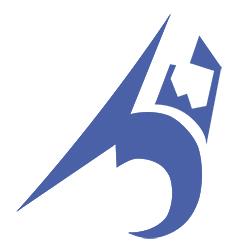 with a stylized outline of the Shimokita Peninsula, in Aomori Prefecture where Misawa AB is located.
with a stylized outline of the Shimokita Peninsula, in Aomori Prefecture where Misawa AB is located.
Nansei Shien Hikohan
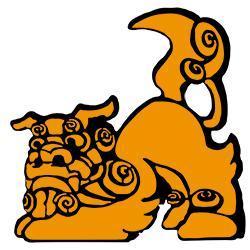 Nansei Shien Hikohan, or Southwestern HQ Support Flight (南西支援飛行班), has a small number of T-4s in use, flying from Naha AB at Okinawa. The unit’s T-4s sport a yellow tail marking of a Shisa, a lion-like Ryukyuan god said to protect Okinawa from evil.
Nansei Shien Hikohan, or Southwestern HQ Support Flight (南西支援飛行班), has a small number of T-4s in use, flying from Naha AB at Okinawa. The unit’s T-4s sport a yellow tail marking of a Shisa, a lion-like Ryukyuan god said to protect Okinawa from evil.
Seibu Koku Homentai Shireibu Shien Hikotai
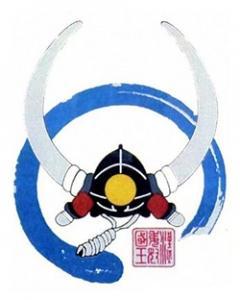 Just four T-4s are assigned to the Western Air Command HQ Support Squadron (Seibu Koku Homentai Shireibu Shien Hikotai / 西部航空方面隊 司令部支援飛行隊) at the military part of the airport of Fukuoka named Kasuga. The tailmarking shows a Samurai helmet.
Just four T-4s are assigned to the Western Air Command HQ Support Squadron (Seibu Koku Homentai Shireibu Shien Hikotai / 西部航空方面隊 司令部支援飛行隊) at the military part of the airport of Fukuoka named Kasuga. The tailmarking shows a Samurai helmet.
Hiko Kyodogun
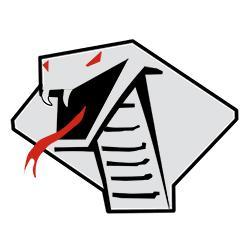 The Aggressor Group (Hiko Kyodogun /飛行教導群) of the Tactical Air Training Command flies colourful F-15 Eagles, and some T-4s. The Aggressors are based at Komatsu but are on regular deployments to other fighter bases to train with the local units. The unit was formed at Tsuiki with five T-2s and two T-33s in 1981 but already two years later moved to Nyutabaru. The units switched to F-15DJs in 1990 and moved to Komatsu in 2016. In 2000, F-15Js were added to the unit. From the start of the unit, a Cobra’s head was used as squadron marking.
The Aggressor Group (Hiko Kyodogun /飛行教導群) of the Tactical Air Training Command flies colourful F-15 Eagles, and some T-4s. The Aggressors are based at Komatsu but are on regular deployments to other fighter bases to train with the local units. The unit was formed at Tsuiki with five T-2s and two T-33s in 1981 but already two years later moved to Nyutabaru. The units switched to F-15DJs in 1990 and moved to Komatsu in 2016. In 2000, F-15Js were added to the unit. From the start of the unit, a Cobra’s head was used as squadron marking.
Hiko Kaihatsu Jikken Dan
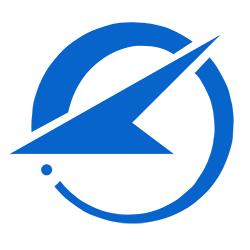
Dating back to 1955, Air Development and Test Wing (飛行開発実験団) has a long history of test-flying in the JASDF. Current homebase is Gifu, where the unit has been residing since 1957. The markings of the unit date back to 1964 when they first appeared on aircraft. The design consists of two elements: a stylized sonic boom, combined with an orbiting satellite. The original design, made by a member of the unit, was black but this was later changed to blue. The markings on the aircraft always have the arrowhead pointing towards the front of the aircraft. The original XT-4, now just called T-4, has been with the unit since 1985 (!) and can still be seen regularly.
3 Hikotai
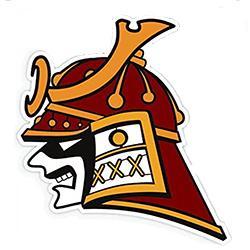
The longest serving squadron within the JASDF is 3 Hikotai. Since 1971, 3 Hikotai (3 飛行隊) had its homebase at Misawa. With 501 Hikotai retiring in 2020, 3 Hikotai moved to Hyakuri. On 15 January 2020, the first 7 F-2As and F-2Bs landed at Hyakuri, followed by three more a few days later. In 1983, the current markings were adopted showing a samurai wearing a traditional helmet. The squadron flies the F-2A, F-2B and a number of T-4s.
6 Hikotai
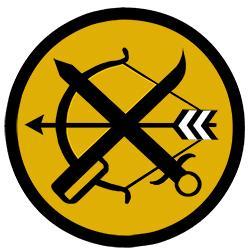
Tsuiki based 6 Hikotai (6 飛行隊) was formed in 1959 at Chitose with a number of F-86s. After changing types to Mitsubishi F-1 and later the F-2A/B that it still flies today. Besides that, a number of T-4s are assigned to the unit. The squadron badge, in place since 1980, has an interesting history. It shows symbols from Japanese mythology including an arrow referring to the arrow that the first Emperor (Jimmu) shot towards the sun in a bid to end policial instability. Inspiration for the badge was the three-pronged lance known as the ‘Amano Sakahoko’, believed to be placed on Mount Takachiho-no-mine by a heavenly descendant God.
8 Hikotai
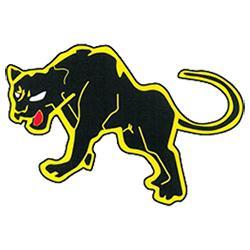
When formed at Matsushima in 1960, 8 Hikotai (8 飛行隊) was the second F-86F unit within the JASDF. The unit has switched home base numerous times over the last decades and is currently assigned to the 8th Air Wing at Tsuiki, flying the F-2A/B and a number of T-4s. Due to the many changes in home bases, the unit markings have changed as well. The markings of Hokubu Shien Hikohan (Misawa) were once worn by 8 Hikotai F-1s, albeit in red or yellow. When the unit switched to the F-4EJ, the current Panther markings were adopted. The Panther refers to the callsign used by the unit.
13 Hiko Kyoikudan
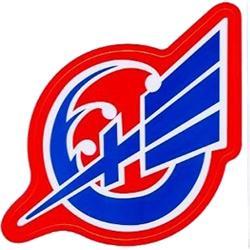
13 Hiko Kyoikudan (13 飛行教育団) or Flying Training Wing was formed in 1957 at Utsunomiya flying USAF T-6s and later Fuji T-1s. In 1962 the unit moved to its current homebase, Ashiya. In 1998, the unit switched to the T-4 with one squadron (1 Hikotai), followed by the re-commissioned 2 Hikotai in 2000. The 13th’s tail marking is a free representation of the kanji for the number `13` (十三), combined with a stylized picture of the Genkai Sea.
21 Hikotai
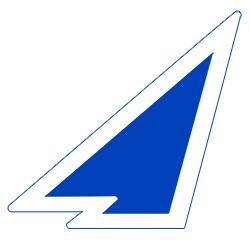
When formed in in 1975, the unit was called the T-2 Operational Flight Evaluation Group but was renamed to 21 Fighter Training Squadron a year later. When Blue Impulse stopped flying the F-86, 21 Hikotai started testing aerobatics with the T-2, and Blue Impulse became part of 21 Hikotai (21 飛行隊). When Blue Impulse switched to the T-4 in 1995, it became a separate unit. Nowadays, 21 Hikotai is based at Matsushima flying F-2Bs and T-4s. The unit was heavily impacted by the Tsunami of 2011 when Matsushima was flooded and all 18 F-2Bs were submerged in saltwater. It took until 2016 for the unit could fly a number of refurbished F-2Bs again and had to use F-2Bs from other units until then. Current unit marking is a stylized ‘4’, referring to the 4 Flying Training Wing where the T-2 Operational Flight Evaluation Group was formed.
23 Hikotai
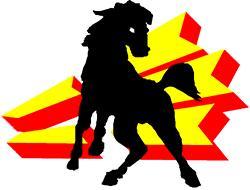
One of the youngest units within the JASDF is 23 Hikotai (23 飛行隊) based at Nyutabaru, having formed only in October 2000. The unit acts as an OCU, flying the F-15J/DJ and of course some T-4s. The unit took over the F-15s that came from the disbanded 202 Hikotai. The markings show the symbols ‘2’ and ‘3’ (二三 in Kanji). The horse is a Misaki horse, an endangered species that has its habitat in Southern Miyazaki.
31 & 32 Hikotai
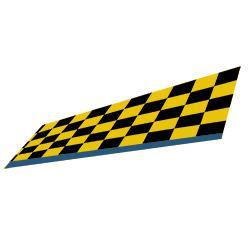
The 31 Hikōkyōikutai (31 教育飛行隊) was originally formed in 1989 as a T-4 conversion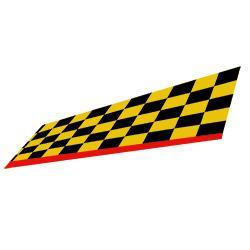 unit when the JASDF switched from T-33 to T-4 as jet trainer. Hamamatsu has always been its homebase. A year later, sister unit 32 Hikōkyōikutai (32 教育飛行隊) was formed under 1st Air Wing. Squadron markings of both units are almost equal; a yellow/black checkerboard. 31 Hikotai has a blue stripe underneath, while 32 Hikotai uses a red stripe. For a number of years, Ashiya based 13 Hiko Kyoikudan was the sole user of red and white painted T-4s, but the last few years these aircraft have been seen operating from Hamamatsu as well.
unit when the JASDF switched from T-33 to T-4 as jet trainer. Hamamatsu has always been its homebase. A year later, sister unit 32 Hikōkyōikutai (32 教育飛行隊) was formed under 1st Air Wing. Squadron markings of both units are almost equal; a yellow/black checkerboard. 31 Hikotai has a blue stripe underneath, while 32 Hikotai uses a red stripe. For a number of years, Ashiya based 13 Hiko Kyoikudan was the sole user of red and white painted T-4s, but the last few years these aircraft have been seen operating from Hamamatsu as well.
201 Hikotai
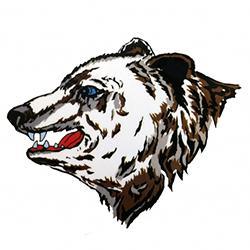
The 201 Hikotai (201 飛行隊) has a history dating back to 1963 when it was formed at its current homebase, Chitose. After 11 years operating the F-104J/DJ, the unit was disbanded only to be resurrected in 1986 operating the F-15J/DJ and T-4s. With the new era, a new unit marking was adopted in 1986: the head of a brown bear, referring to the wildlife that can be seen near Chitose.
203 Hikotai
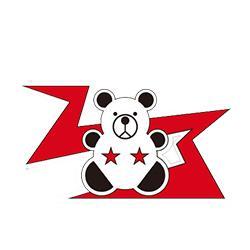
After being formed in 1964 at Komaki with F-104J/DJs, 203 Hikotai (203 飛行隊) moved to its current home base Chitose only five months later. 203 Hikotai switched to the F-15J/DJ in 1983 and has some T-4s on strength as well. When looking at the unit markings, 203 can be made out. The red flashes are the ‘2’ and ‘3’, while the belly of the bear is the ‘0’. The two stars in the logo refer to 2nd Air Wing.
204 Hikotai
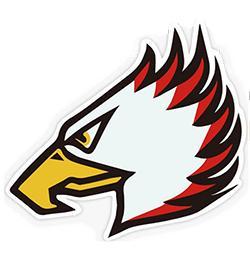
In 1964, 204 Hikotai (204 飛行隊) was formed at Nyutabaru flying F-104J/DJs. In 1985, when the first F-15J/DJs were received, the unit moved to Hyakuri where it stayed until 2009. In that year, 204 was moved to Naha to expand the Air Defence capabilities at Okinawa. The unit markings date back to the move to the F-15, when an Eagle’s head was adopted as new marking.
301 Hikotai
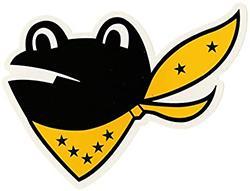
The famous 301 Hikotai (301 飛行隊) has a long history with the F-4 Phantom. When the unit was formed in 1973 it was the first fully equipped unit with the type as a training unit, and in 2020 is still flying the same type. However, Phantom operations will cease in 2020 after which the unit will move to Misawa to adapt the F-35. The frog in the unit markings reflects a special kind of frog that can be found on Mt. Tsukuba, near Hyakuri. Over the years, the number of stars on the scarf has changed, reflecting the Air Wing. Currently, it has 7 stars (7th Air Wing from Hyakuri), but this will probably change to 3 after the move to Misawa (3rd Air Wing).
302 Hikotai
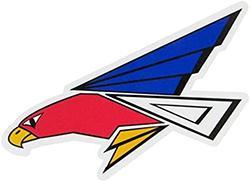
The first operational unit in the JASDF flying the F-4 was 302 Hikotai (302 飛行隊). Formed in 1974 at Chitose, the unit has seen many relocations including Naha, Hyakuri and more recently to Misawa. The unit stopped flying the F-4 and is now the first F-35 unit in the JASDF, of course also flying the T-4. The bird seen in the markings is an ojirowashi (white-tailed sea eagle), that can be found at Hokkaido, Besides that, 302 can be found in the markings: the wings being the ‘3’(三 in Kanji), white tail being ‘0’ (O in Kanji) and the talons being the ‘2’ (二 in Kanji).
303 Hikotai
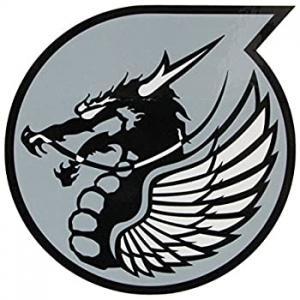
After years of flying the F-4 Phantom, 303 Hikotai (303 飛行隊) switched to the F-15J/DJ in 1987, becoming the first unit to complete conversion from the F-4. 303 Hikotai has been based at Komatsu since it was formed in 1977. The dragon on the unit badge refers to the callsign (‘Dragon’), but also to the the Dragon God that is said to protect Mt. Hakusan near Komatsu. The disc is a stylized ‘6’, referring to the 6th Air Wing.
304 Hikotai
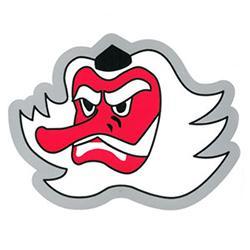
The 304 Hikotai (304 飛行隊) was originally formed as a F-4JEJ unit in 1977 but switched to the F-15J/DJ in 1990. In 2016, the unit moved from Tsuiki to Naha to become part of the new 9th Air Wing. The unit marking is a Tengu mask. Tengu are long-nosed Goblins from Japanese mythology. Known for their skill with swords and possession of mystical powers, they were said to inhabit Mount Hiko in Fukuoka, located near the squadron’s original base at Tsuiki.
305 Hikotai
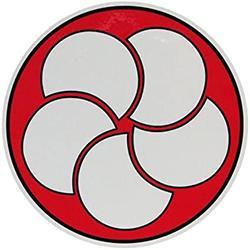
As with many fighter units within the JASDF, 305 Hikotai (305 飛行隊) was formed as a F-4EJ Phantom unit. It switched to F-15s in 1993 and is still flying the type from its current base, Nyutabaru. The plum-flower marking was adopted from 206 Hikotai. When still flying the F-104, 206 Hikotai introduced the red and white plum blossom, referring to Karaiku Park in Mito near Hyakuri. The stylized 7 in the background that was used referring to 7th Air Wing was dropped over the years.
306 Hikotai
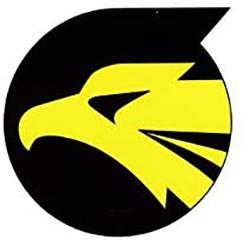
Taking over duties from 205 Hikotai in 1981, 306 Hikoyai (306 飛行隊) was formed as a F-4EJ unit at Komatsu. It was the first unit to receive the F-4EJ Kai in 1989 and switched to the F-15J/DJ in 1996 and still flies the type. The inuwashi (Golden Eagle) in the unit marking was adopted in 1981. The Golden Eagle inhabits the mountains near Komatsu and is the prefectural bird if Ishikawa as well. As with 303 Hikotai, the disc is a stylized ‘6’ referring to 6th Air Wing.
501 Hikotai
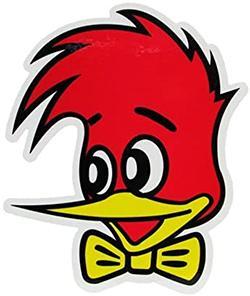
Not really operational anymore, but as it was one of the most famous units, we’ll give it a short description anyway. Coming from a history of using the RF-86F, T-33A and even T-28B, 501 Hikotai (501 飛行隊) started RF-4E operations in 1974. In 1992, when the unit already had moved to Hyakuri from Iruma, a number of converted RF-4EJ Kai were delivered to the squadron. Final RF-4 operations were in March 2020, when 501 Hikotai was sadly disbanded. The unit markings on the tail of the aircraft show a woodpecker that is part of the actual unit-marking; a woodpecker holding a map and a telescope.

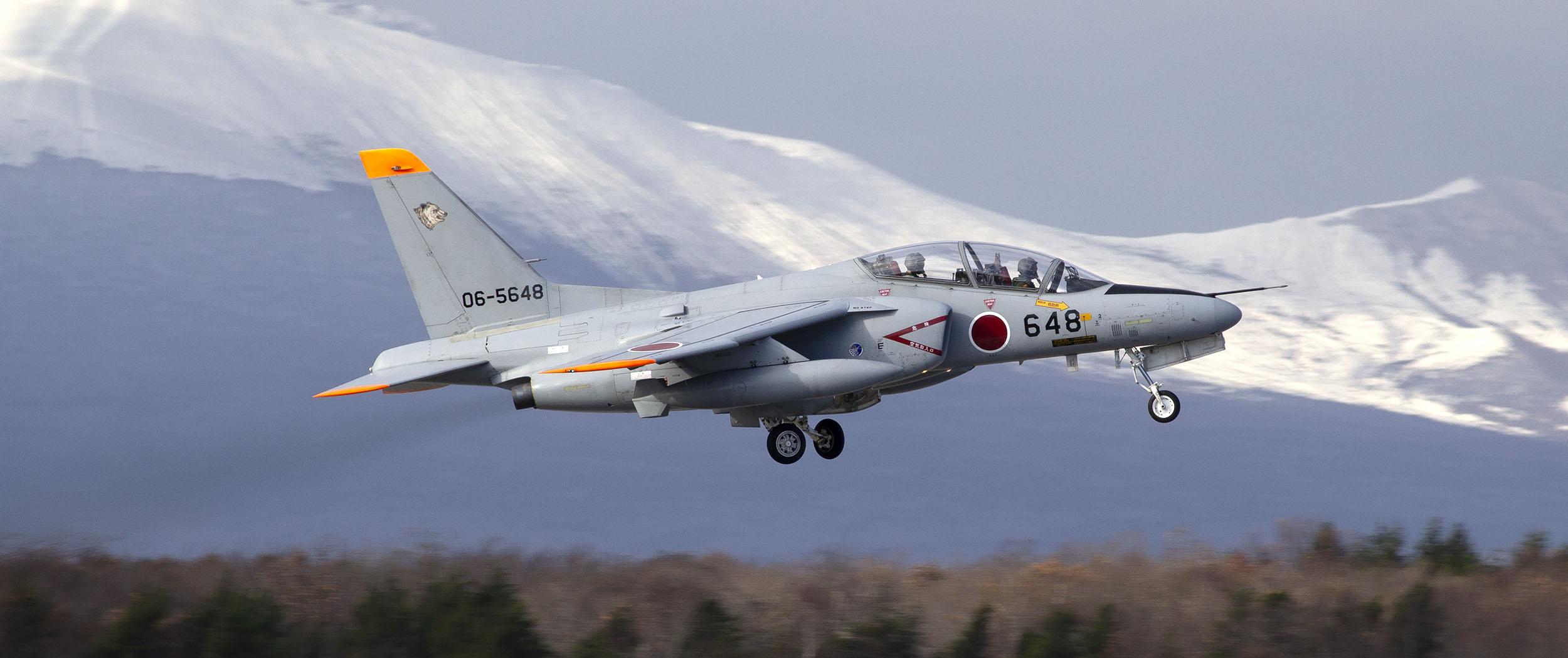
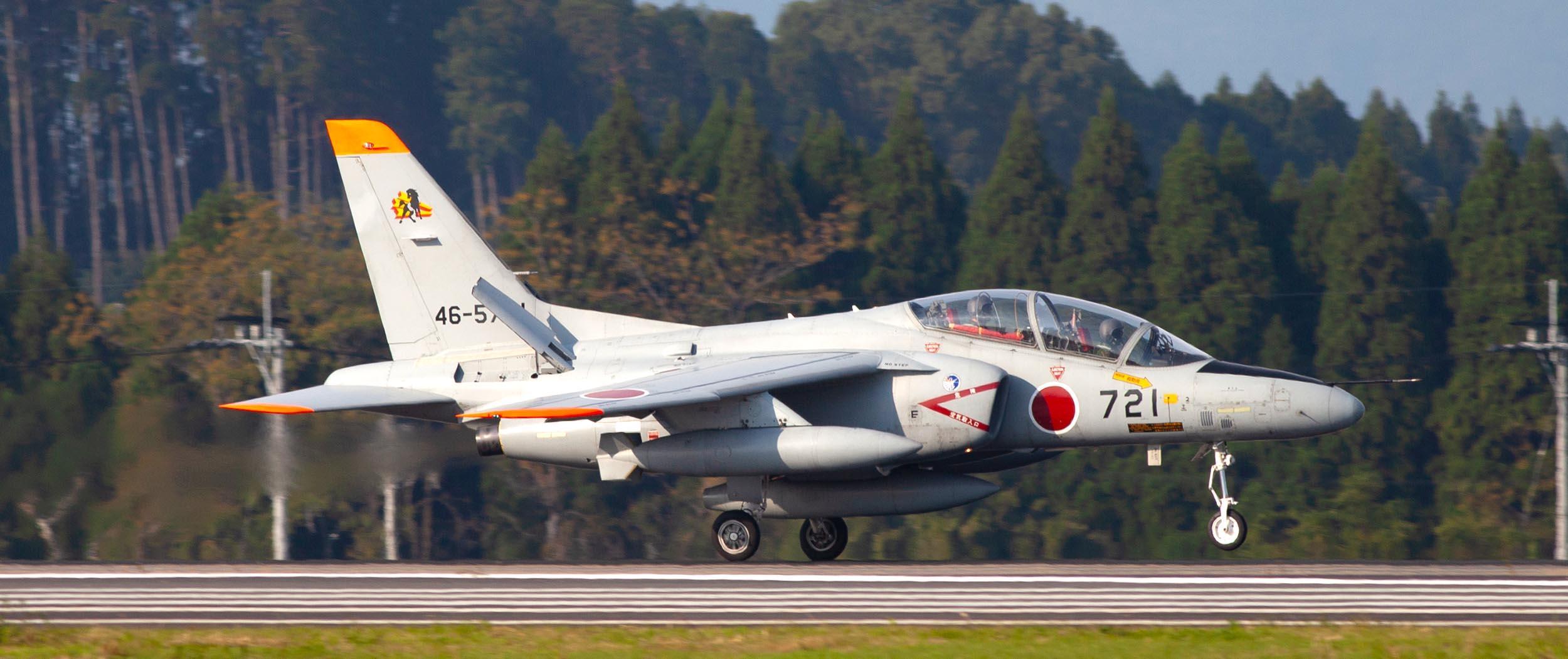
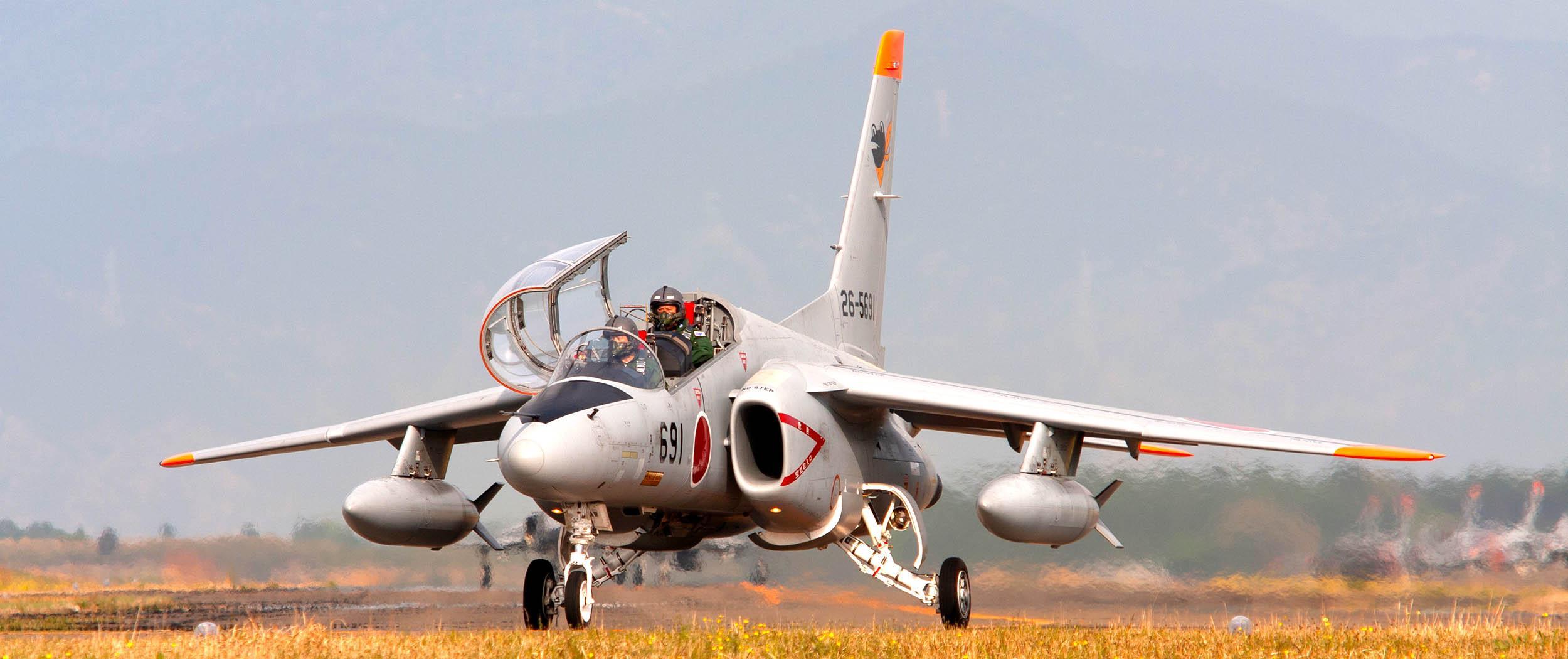
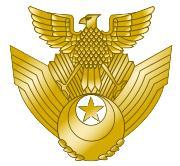 In 1985, the prototype of the T-4 took to the skies for its first flight. The aircraft, serial 56-5601, was called the XT-4 and was the outcome of a four-year development program in which Kawasaki was chosen to design the replacement aircraft for the T-33, Fuji T-1 in one type, including some of the syllabus done by the Mitsubishi T-2. The program of the JASDF was called MT-X and was to provide a trainer that could meet new standards in terms of manoeuvrability, operating cost, and reliability levels. After the first flight, the aircraft was further developed and entered service in 1988. Nowadays, 35 years later, more than 180 T-4s are still in use with 24 units within the JASDF. In total, 212 T-4s were built. Unfortunately, a lot of T-4s are grounded at the moment following an issue with the engines in 2019. Currently, only the training units and Blue Impulse are flying. This article gives a pictorial overview of the current units of the JASDF that still fly the T-4.
In 1985, the prototype of the T-4 took to the skies for its first flight. The aircraft, serial 56-5601, was called the XT-4 and was the outcome of a four-year development program in which Kawasaki was chosen to design the replacement aircraft for the T-33, Fuji T-1 in one type, including some of the syllabus done by the Mitsubishi T-2. The program of the JASDF was called MT-X and was to provide a trainer that could meet new standards in terms of manoeuvrability, operating cost, and reliability levels. After the first flight, the aircraft was further developed and entered service in 1988. Nowadays, 35 years later, more than 180 T-4s are still in use with 24 units within the JASDF. In total, 212 T-4s were built. Unfortunately, a lot of T-4s are grounded at the moment following an issue with the engines in 2019. Currently, only the training units and Blue Impulse are flying. This article gives a pictorial overview of the current units of the JASDF that still fly the T-4.